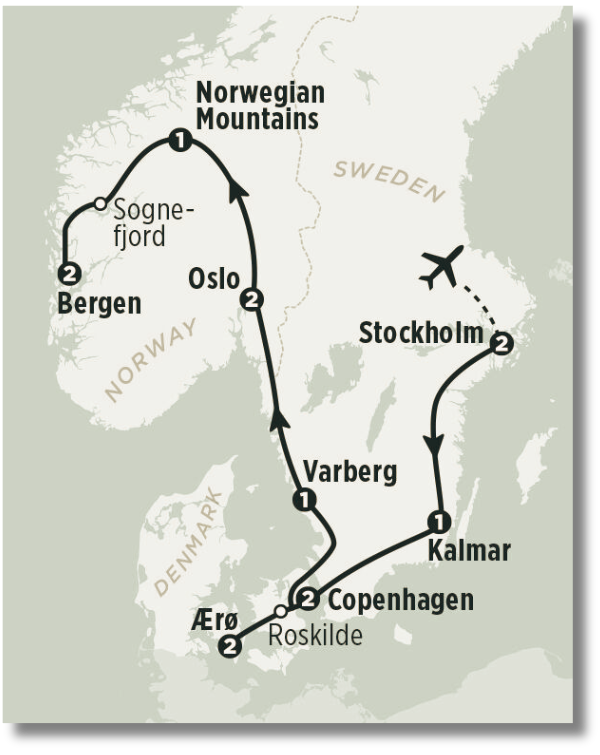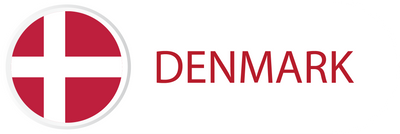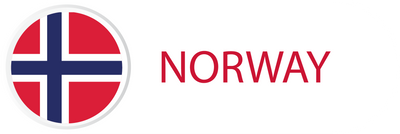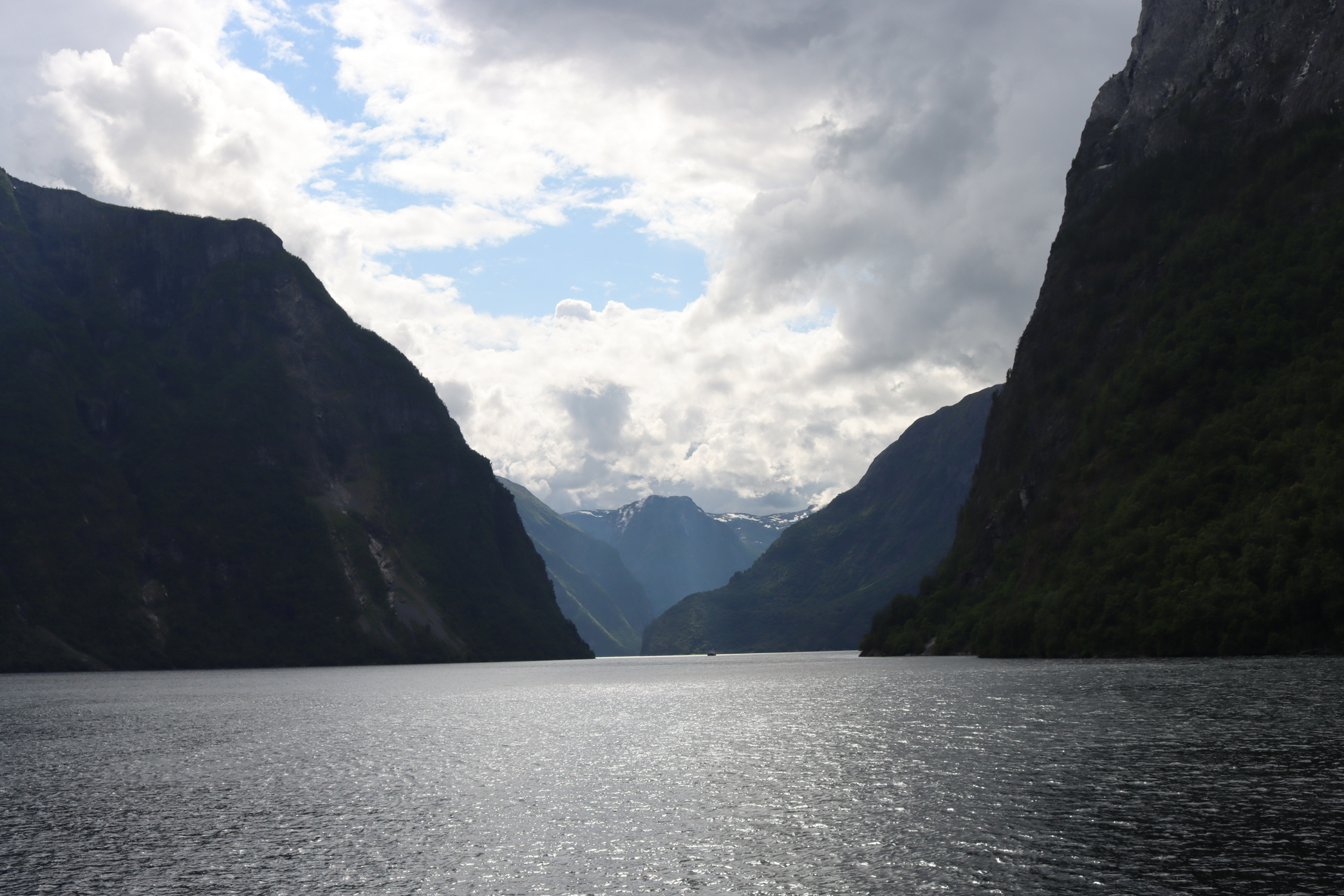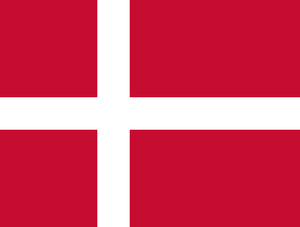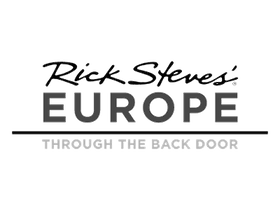
best of
scandinavia
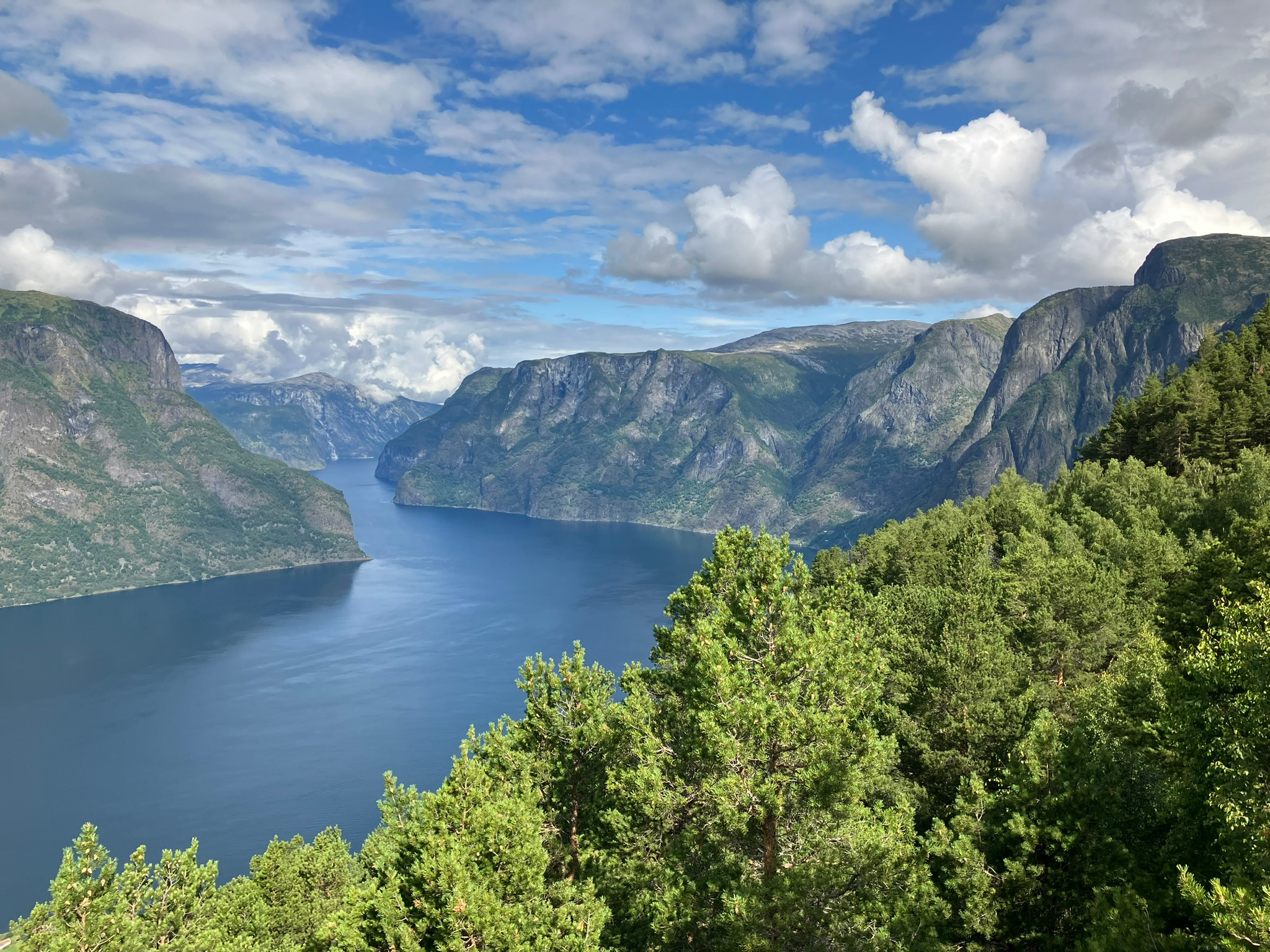
Welcome to our scrapbook
Randy and Jan
Hello,
We are Randy and Jan. Randy is retired from healthcare and is a musician. Jan is a recently retired librarian. We live in Wisconsin, a land full of Scandinhoovians.
This was our first tour with Rick Steves, although we used his indispensable books for our self-guided travels to Italy, Spain, and France.
Those prior trips were exciting, educational, and sometimes exhausting although we gained a sense of accomplishment traveling on our own. However, it took months to research locations and plan the logistics for each trip. Therefore, on this adventure we decided to leave ALL the planning to Rick!
Takk, Rick!
(Thank you, Rick!)
The tour
“Where are we going?”
In May, 2023 we decided to join the Best of Scandinavia in 14 Days Rick Steves Tour leaving just a few weeks later in July.
Within days we were registered, had booked our flights, and reserved pre and post hotel stays. Within weeks emails from Rick’s staff provided further details which included all of the travel instructions, list of hotel accommodations, roster of our travel partners, and guide’s name.
We also received Rick Steves Scandinavia guide book to begin our own planning.
Then we dusted off our passports, left Wisconsin, flew out of Minneapolis, transferred planes at Reykjavik, Iceland and landed in Stockholm to join the tour.
It was a whirl-wind, but in a good way!
“Are we there yet?”
We arrived at Hotel Wellington in Stockholm for our 4pm tour launch with our Danish guide, Heidi. Her orientation included introductions to our travel team, tour guidelines, and receiving city travel passes and Vox audio devices.
The “buddy system” was introduced. Each person was assigned someone (not related) and you became "buddies." Then, when Heidi called “buddy check” we would make eye-contact to ensure that our buddy was present. Our buddies were a friendly couple from Minnesota, so it was more like ‘where the heck are Jan, Randy, Barb and Rick’! This process worked well, was a lot of fun, and we didn’t lose anyone.
After our orientation, our merry group of 26 travelers then strolled through the neighborhood to Kvarnen, a restaurant established in 1908, where we had several meal options, including Swedish meatballs. On the way, Heidi warned us, “watch for bikes” and “NO jaywalking” (it’s a Danish thing). It became a common and comic group refrain as we traveled.
The evening ended back at Hotel Wellington with a relaxing glass of wine.
Getting around
Planes, trains, buses, trams, ferries, funiculars, kayaks and feet were our modes of transportation through Scandinavia.
The tour was well organized. Every evening an itinerary was posted with details for the next day. We knew exactly what to look forward to, not that there weren’t fun surprises along the way! Heidi provided us with city transit passes allowing quick access to many locations. In addition, tickets for all the tour venues were provided for easy entry. A special bonus was the city guides who joined the group to add color commentary and a local’s perspective.
As to money, we did not change dollars to kronor/krona/kroner anywhere in Scandinavia. Our credit cards were our lingua franca.
Tour guide Heidi was well organized, good humored, energetic, and very knowledgeable. This trip did depend upon a lot of bus time, but Heidi enhanced the experience through educational narrations, musical selections, numerous snacks, and bus lunches.
Bus driver Johnny was skilled, cheerful, and very helpful.
Our itinerary and map
With Heidi guiding us and Johnny at the wheel, we traveled both the east and west coasts of Sweden staying in three Swedish cities; Stockholm, Kalmar on the way to Denmark, and Varberg on our way to Norway. In Denmark, we stayed in Copenhagen and on Aero Island. Norway included nights in Oslo, Laerdal, and Bergen.
Our scrapbook is organized geographically by country.
Jump start your own journey by clicking on a:
- country on the navigation bar,
- flag on the map (Itinerary & Map link above, use your Back button to return)
- country listed below, or
- simply scroll down and enjoy the trip!
See
Sweden
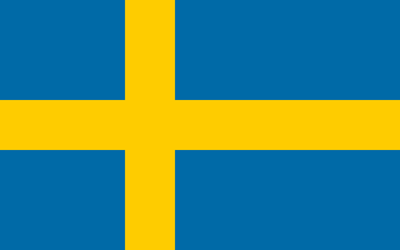
Stockholm
The tour focused on Gamla Stan “Old Town” which dates to the 13th century. Cobbled streets lead down to the harbor with islands strung out toward the Baltic Sea.
Swedish ruler, Birger Jarl made a trade agreement with Lübeck, Germany and the city grew rapidly, becoming the Swedish capital in 1436. One of the origin stories for the name Stockholm or "log island" in Swedish is that the leaders took a log, hollowed it out, filled it with gold, and set it afloat. Several days later it landed on the island where Gamla Stan sits today and they founded the new capital of Sweden.
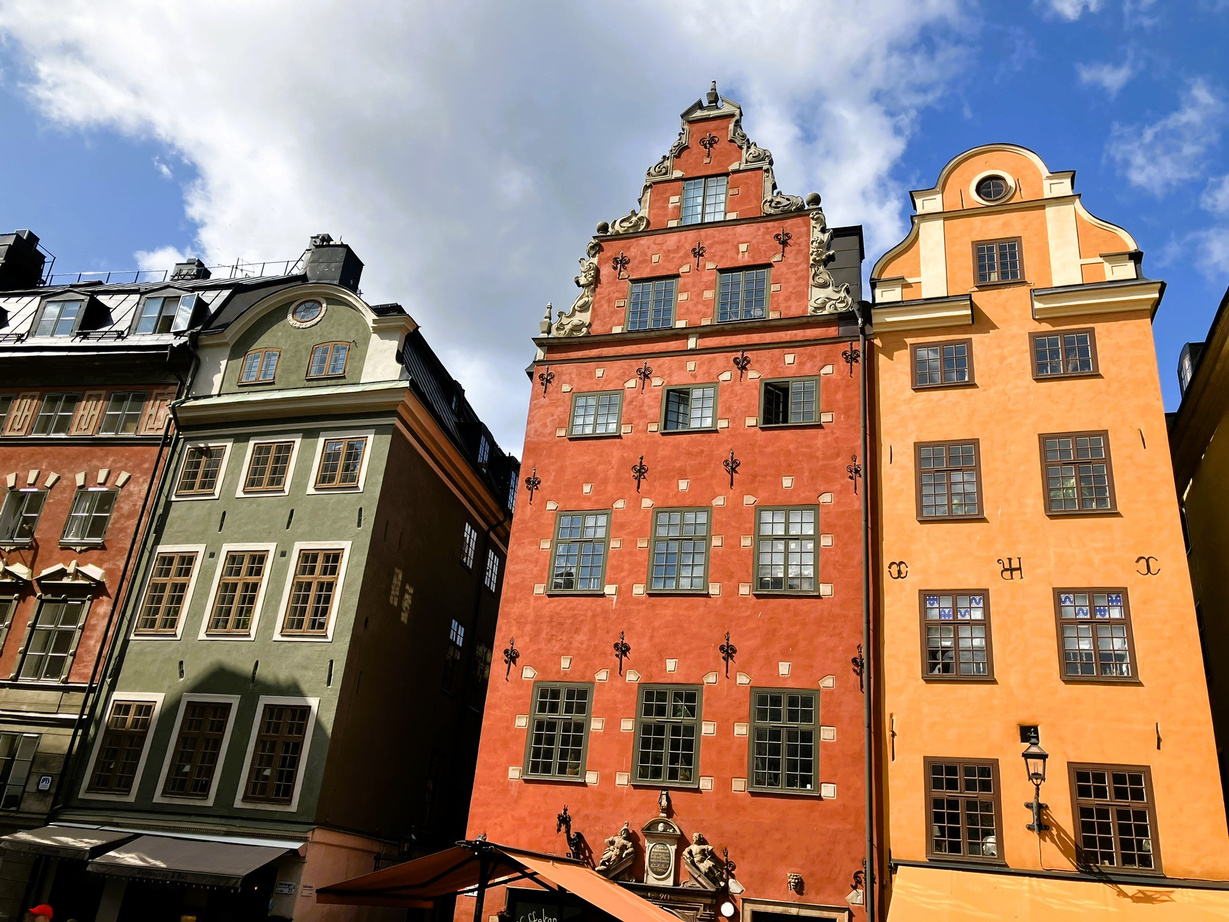
the city of Stockholm
First impressions
Sightseeing
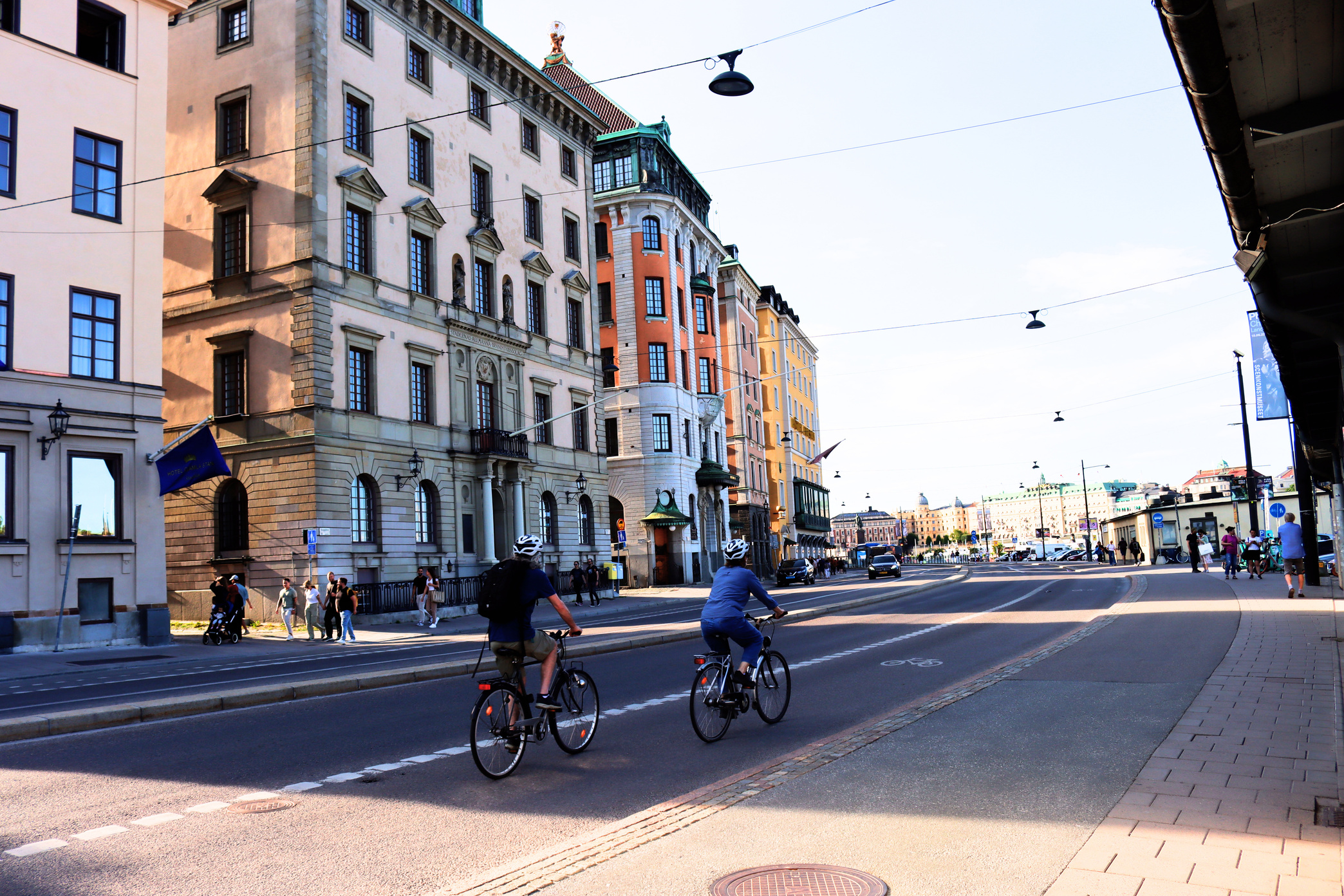
Tall, young, blonde and bikes! The city always looks to the water, whether for recreation or as a working port. The waterfront district is a true gathering point for locals as well as travelers.
The first full day in Stockholm we met our city guide, Håkan, and took a walking tour. Stockholm is a youthful city with an old soul sitting on the sea. We walked through Gamla Stan’s (Old Town) cobblestone streets and past colorful medieval period buildings. These invite you to wander from corner to corner finding hidden courtyards, fountains, and statues.
The afternoon was spent on the island of Djurgården visiting the Vasa Museum and Skansen.
The following day we toured City Hall where the Nobel ceremonies are held and learned more about the economic, political, and social fabric of Sweden.
In the afternoon we left for Kalmar.
Observations

Stockholm has clean streets and is very walkable. Once you learn the local courtesies, the bicyclists and drivers are reasonably forgiving! Ferries from the waterfront to points of interest around the harbor are fast, inexpensive, and very scenic - and you see more of Stockholm than feet would allow.
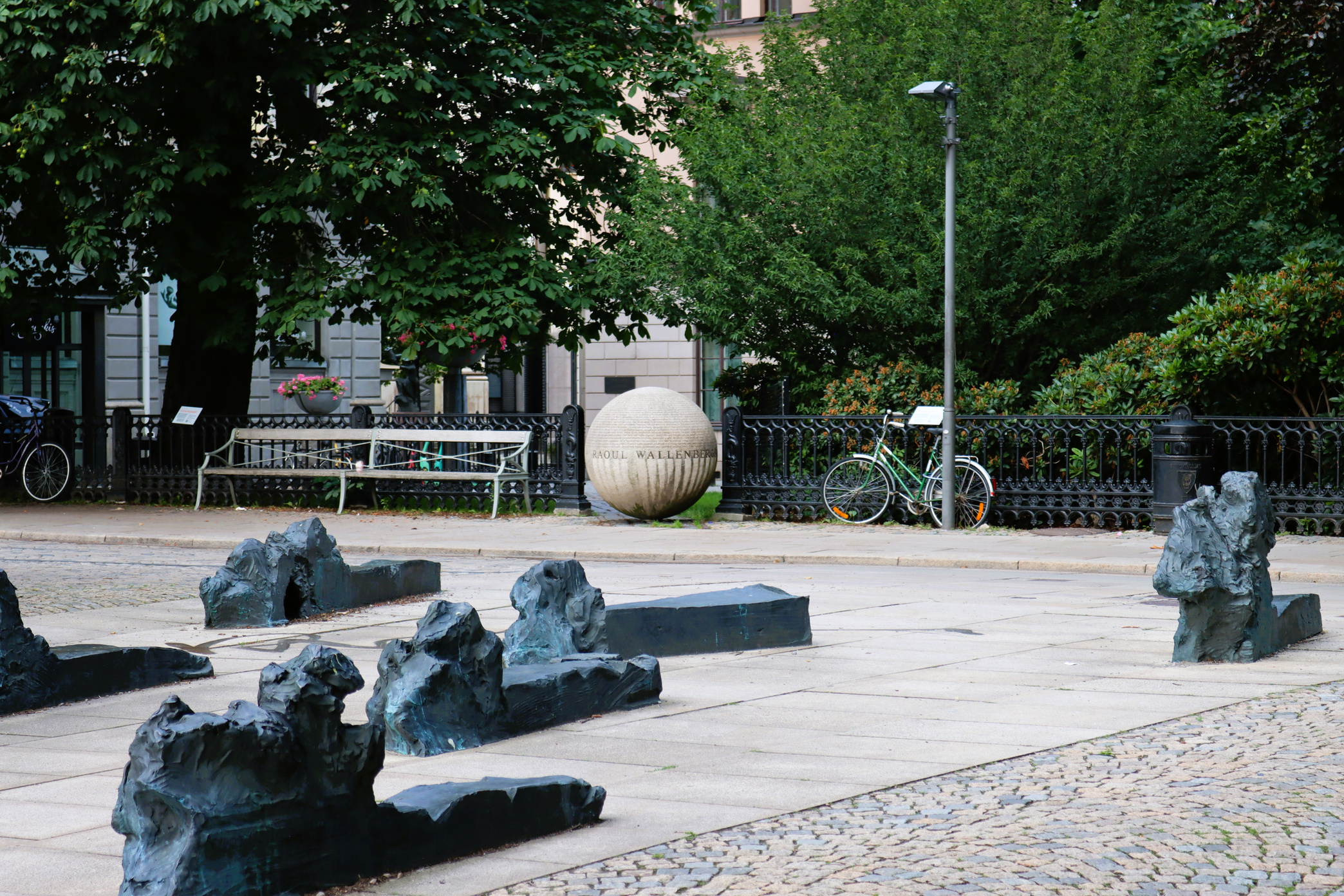
Raoul Wallenberg Memorial
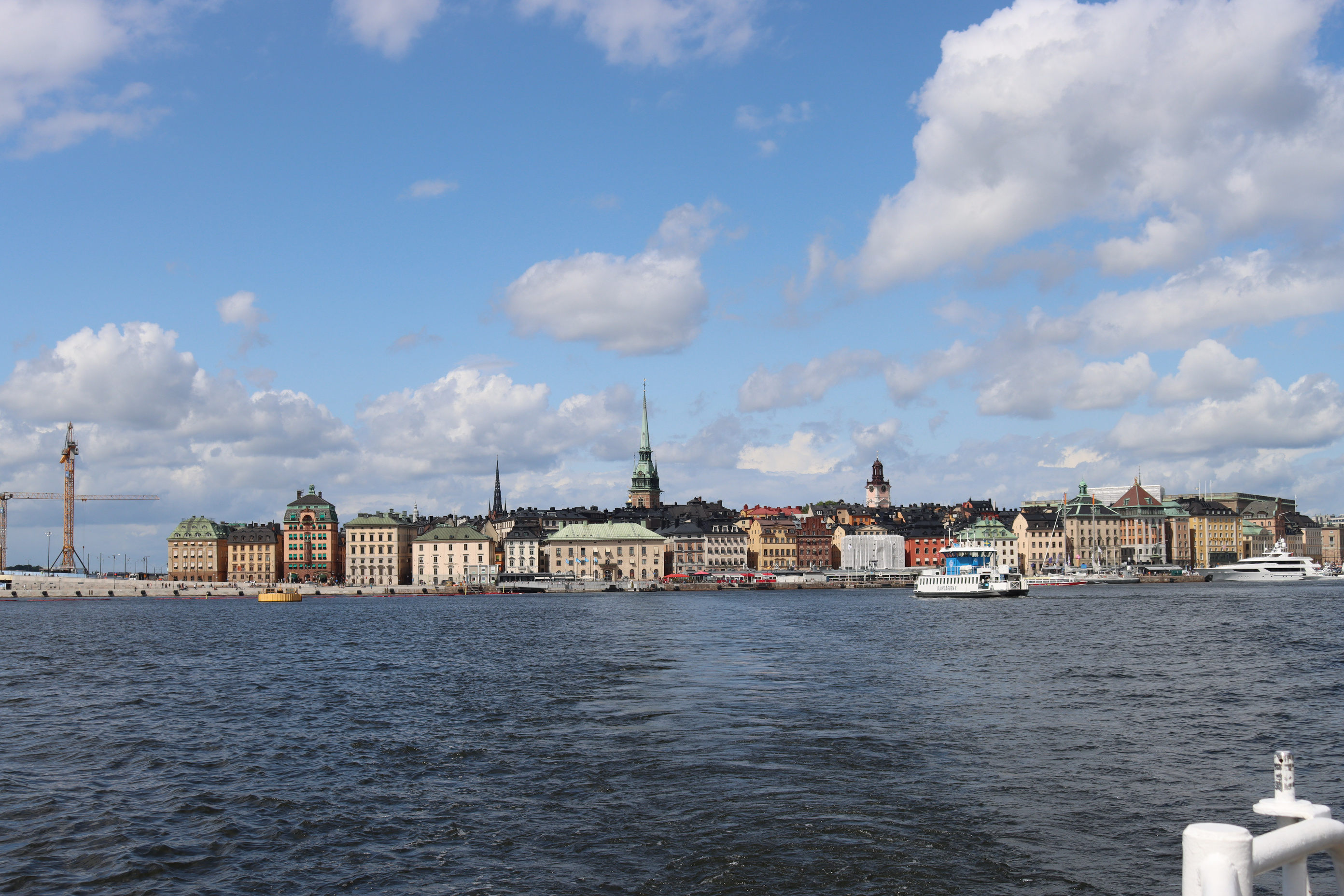
Stockholm from the harbor
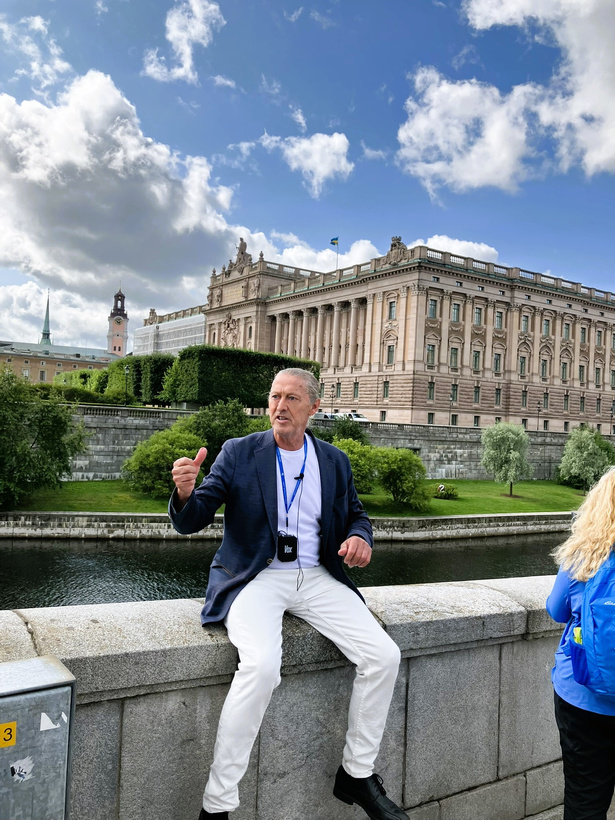

Old Town
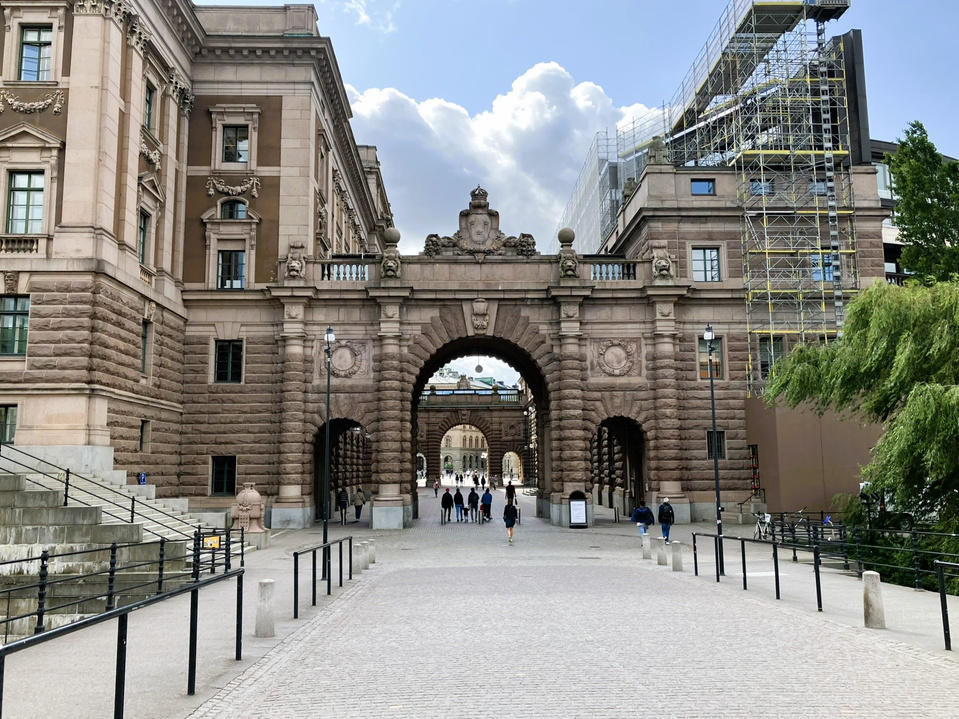
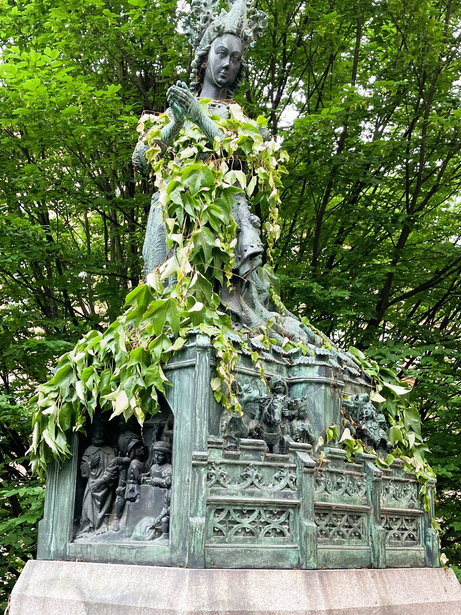
Our city guide, Håkan
St. George & the Dragon
Parliament House
Princess statue
Colorful Stockholm
Hedvig Eleonora Church organ
Saint Gertrude Church
Galma Stan shop window
King's Garden Fountain
Galma Stan square
Vasa Museum
The Vasa was a warship commissioned by King Gustavus Adolphus, and built from 1626-1627. Vasa was extremely powerful for its day, and beautiful, with stem to stern carvings decorating the fantail, the cannon doors, the railings and the bow. It was unfortunately very top heavy (read ‘unstable’) due to the addition of a second fighting deck filled with cannons. It foundered in a moderate wind on its maiden voyage (August 10, 1628), having traveled only some 1300 meters. Most of the cannons were recovered, but the ship itself could not be raised with the technology of the day. It was soon lost to history. It was found again in 1951, and salvaged in 1961. The museum houses not only the ship itself, but many of the archaeological artifacts, plus a great deal of information on the process of salvage and the archaeological importance of the ship’s recovery.
This museum is a must-see!
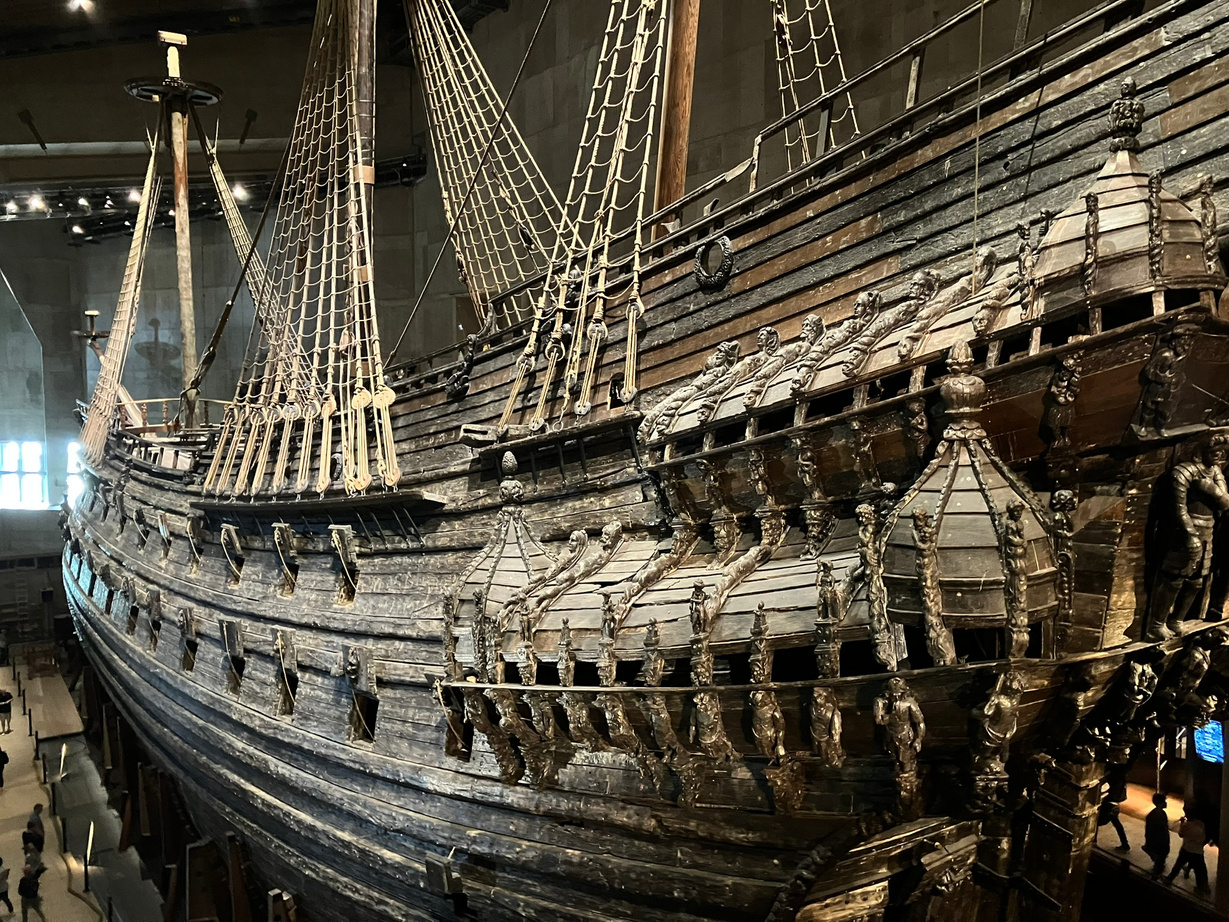
The Vasa
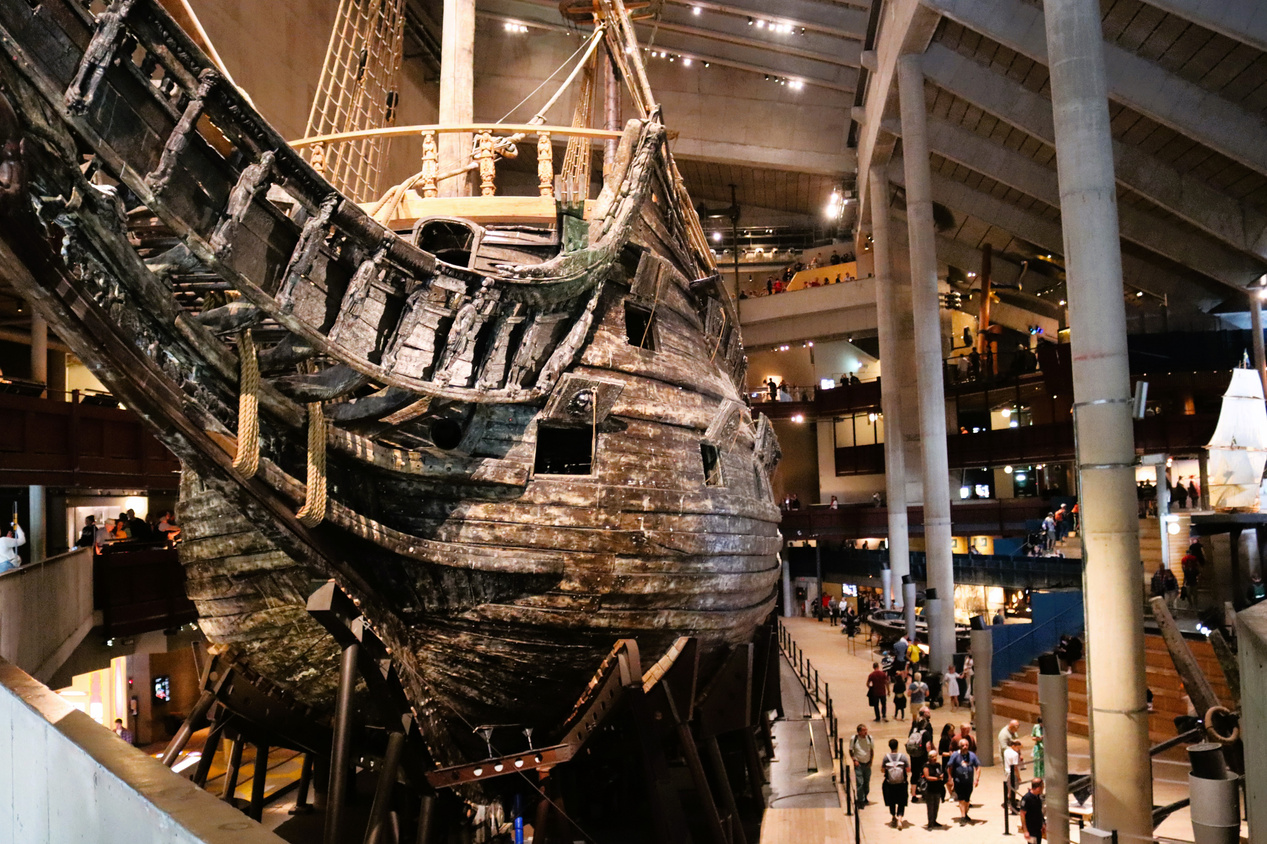
Starboard view

Rigging
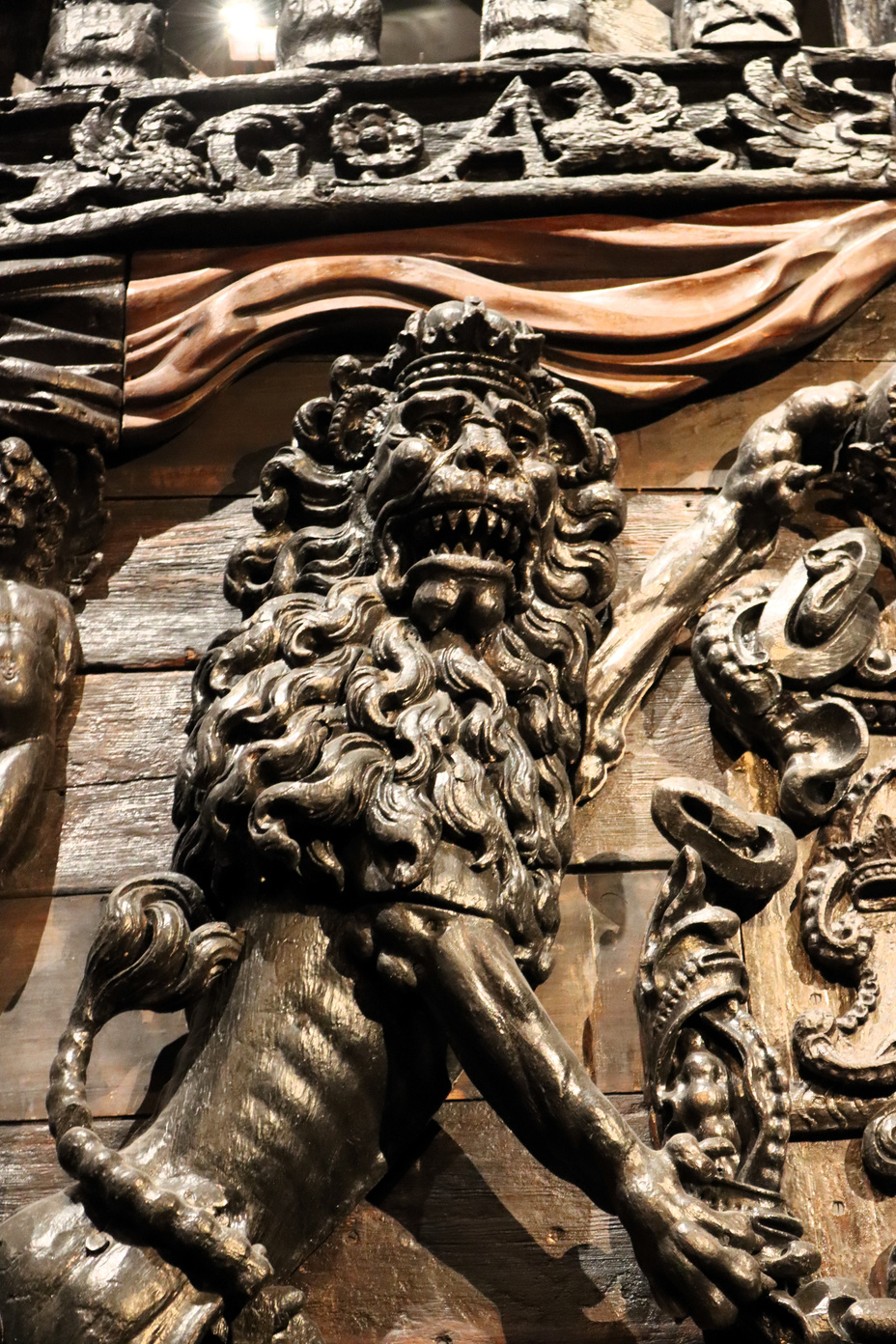
Carving on stern
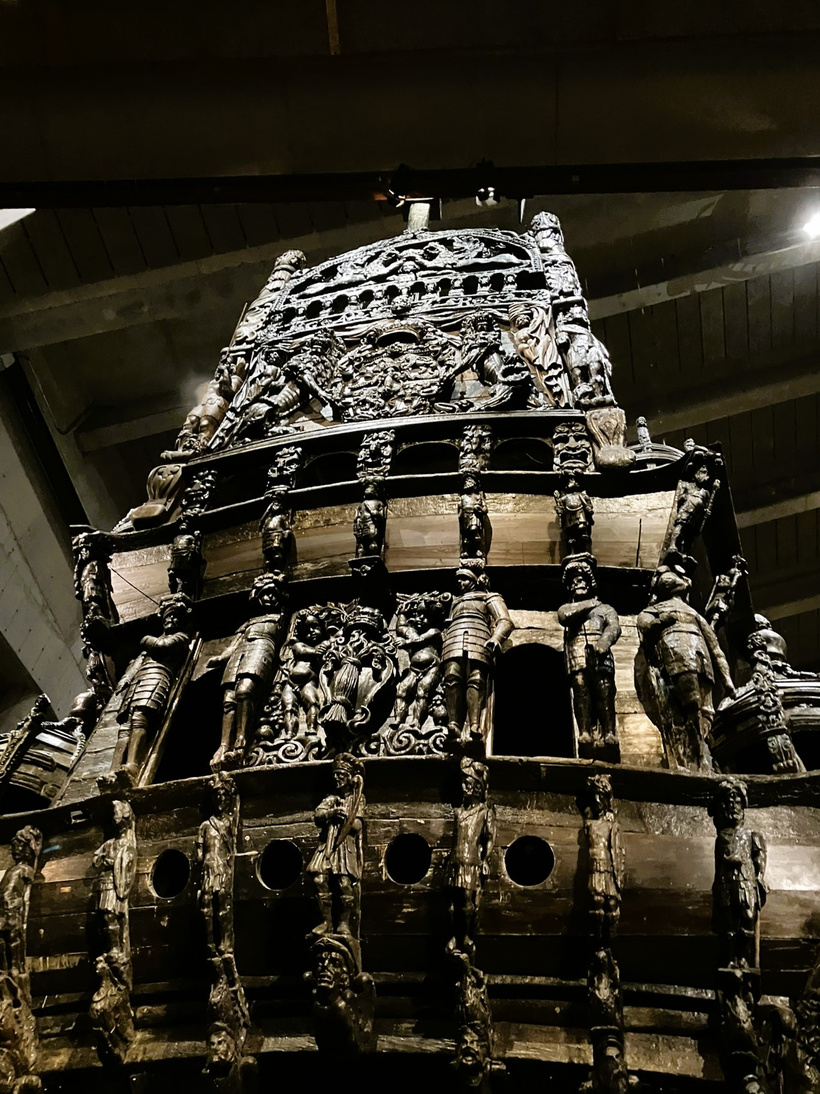
Carvings on stern
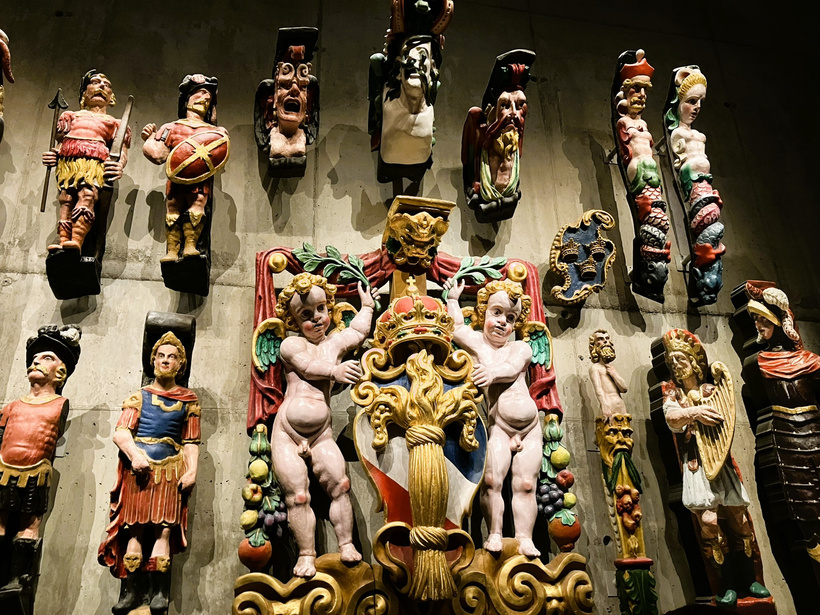
Color models of sculptures
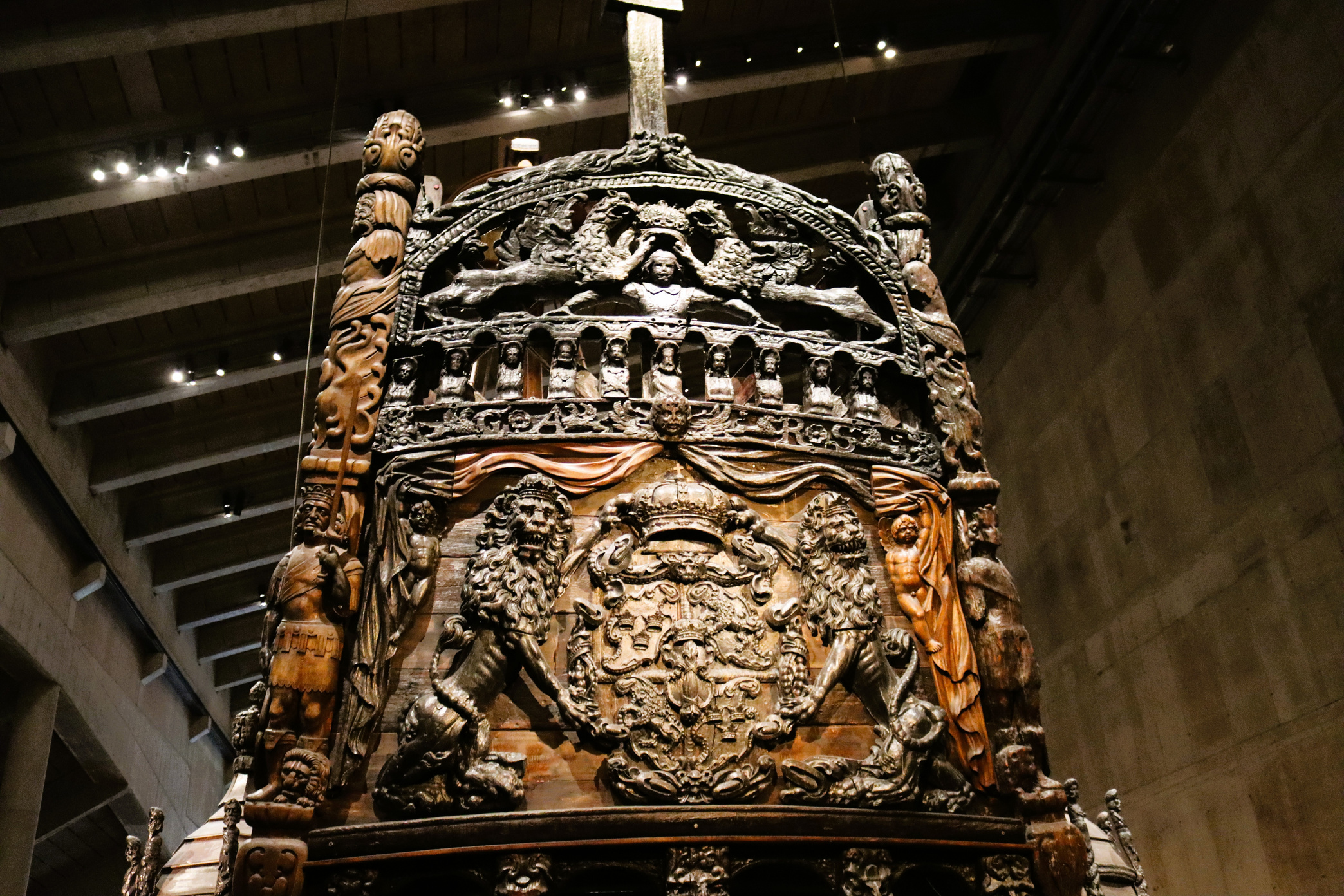
King on top of transom
Skansen
AUDIO
Skansen
Skansen, on the island of Djurgården, is a short ferry ride from the Skeppsbron waterfront.
We followed the nickelharpas and fiddle music and found these colorful dancers dressed in traditional costumes. They are a fine introduction to the open air museum, which is composed of many pre-industrial era buildings that were gathered to the site beginning in the late 1800s. There are houses, churches, business and trade buildings of many types, gardens, farmsteads and even some farm animals.
There are many other museums in this area, such as the ABBA and Vasa museums, plus an amusement park.
Sitting in the sun at this open-air cultural museum, surrounded by music, laughter, and costumed dancers is a relaxing way to spend an afternoon or full day.
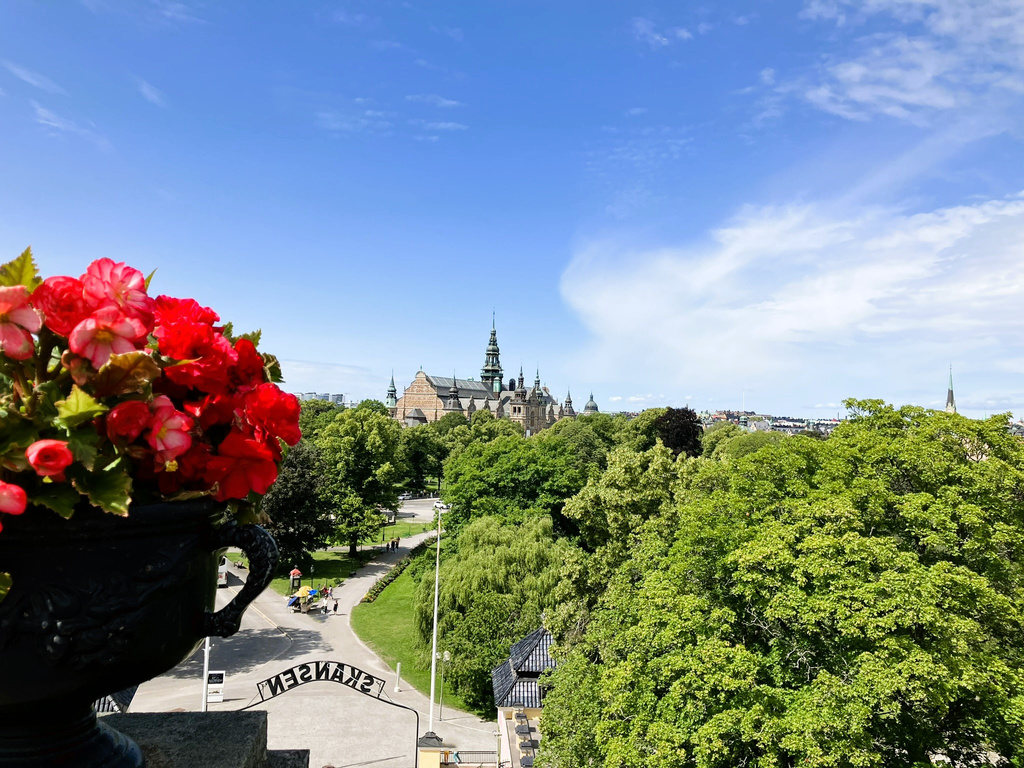
Entrance
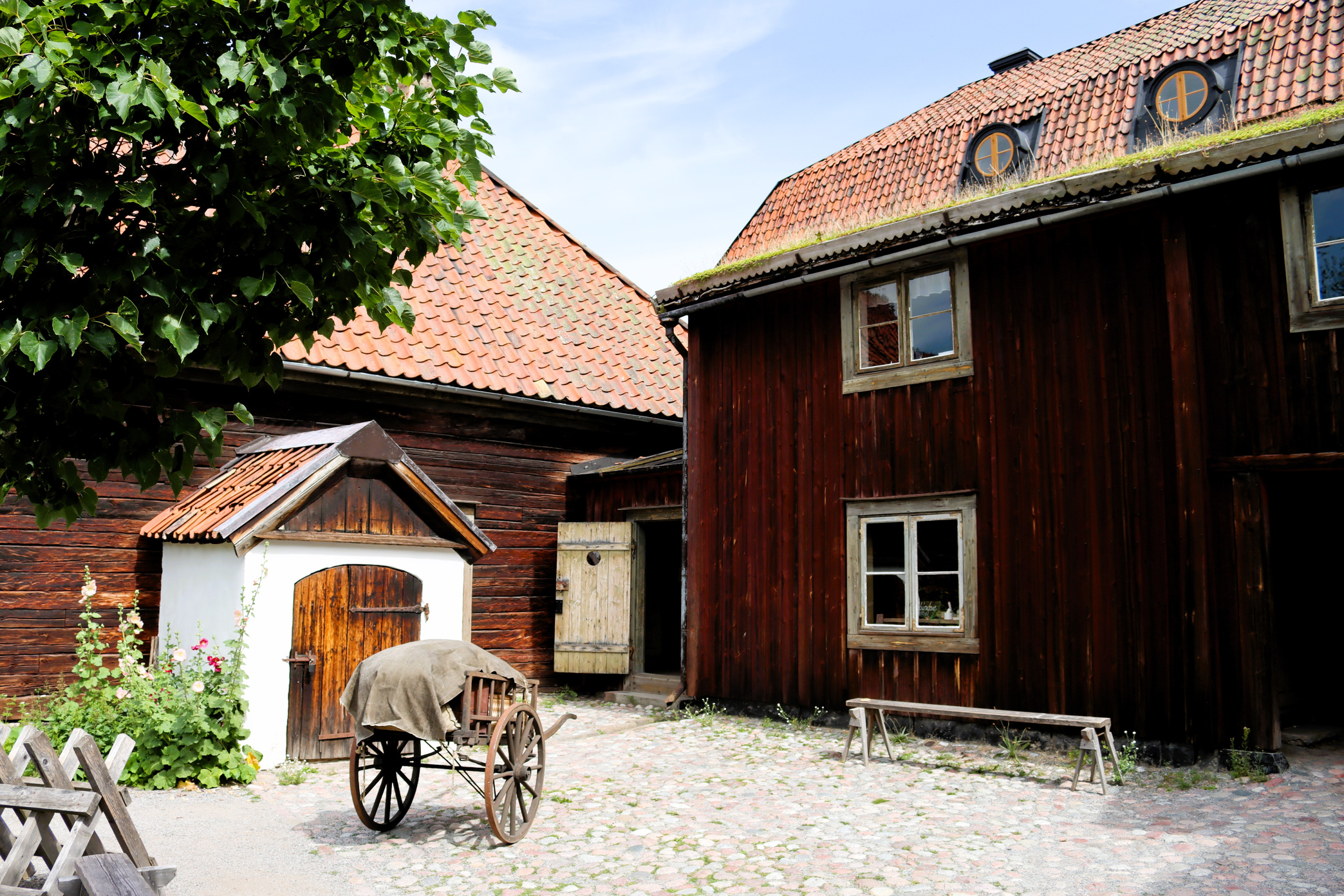
Printer’s courtyard
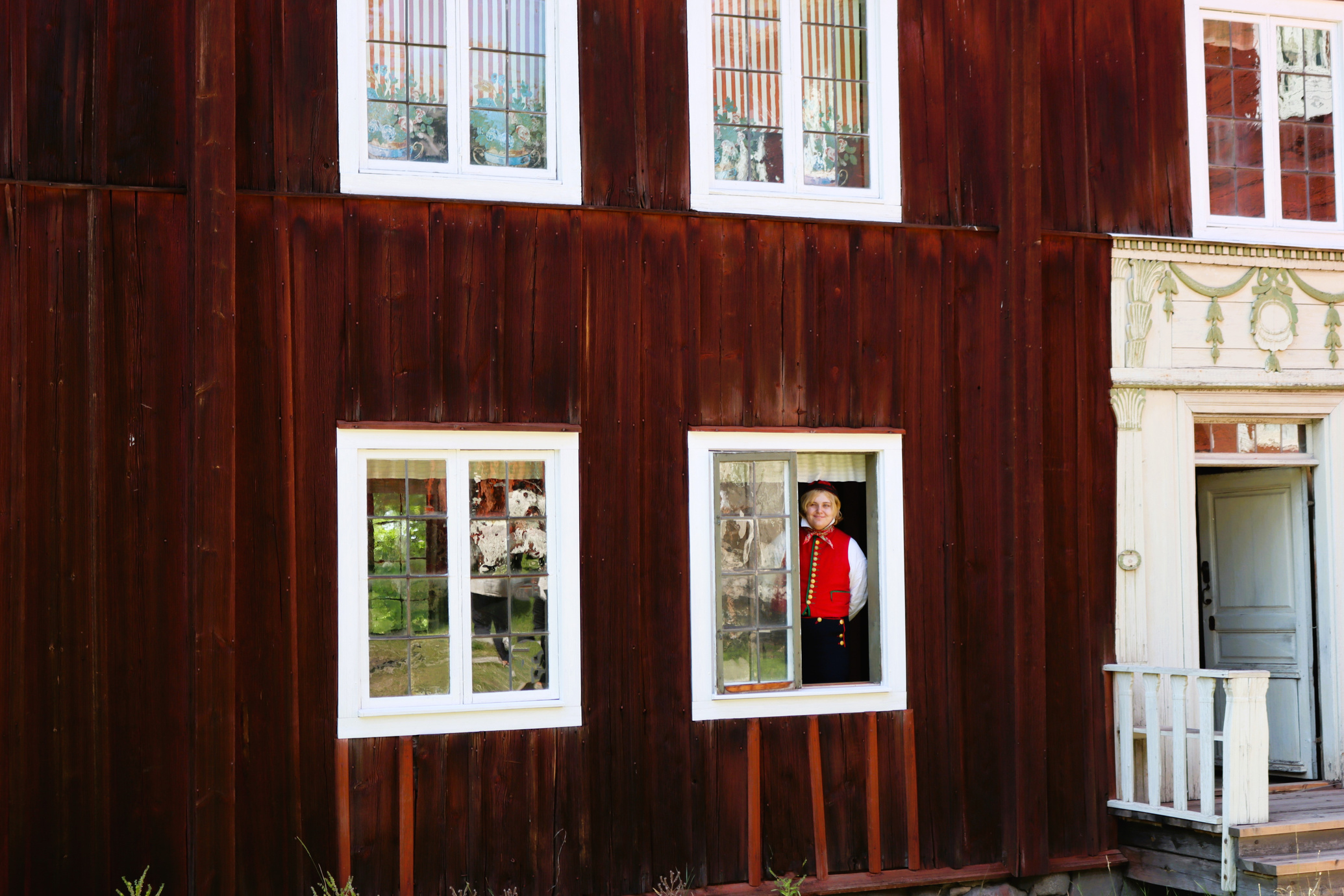
Skansen docent
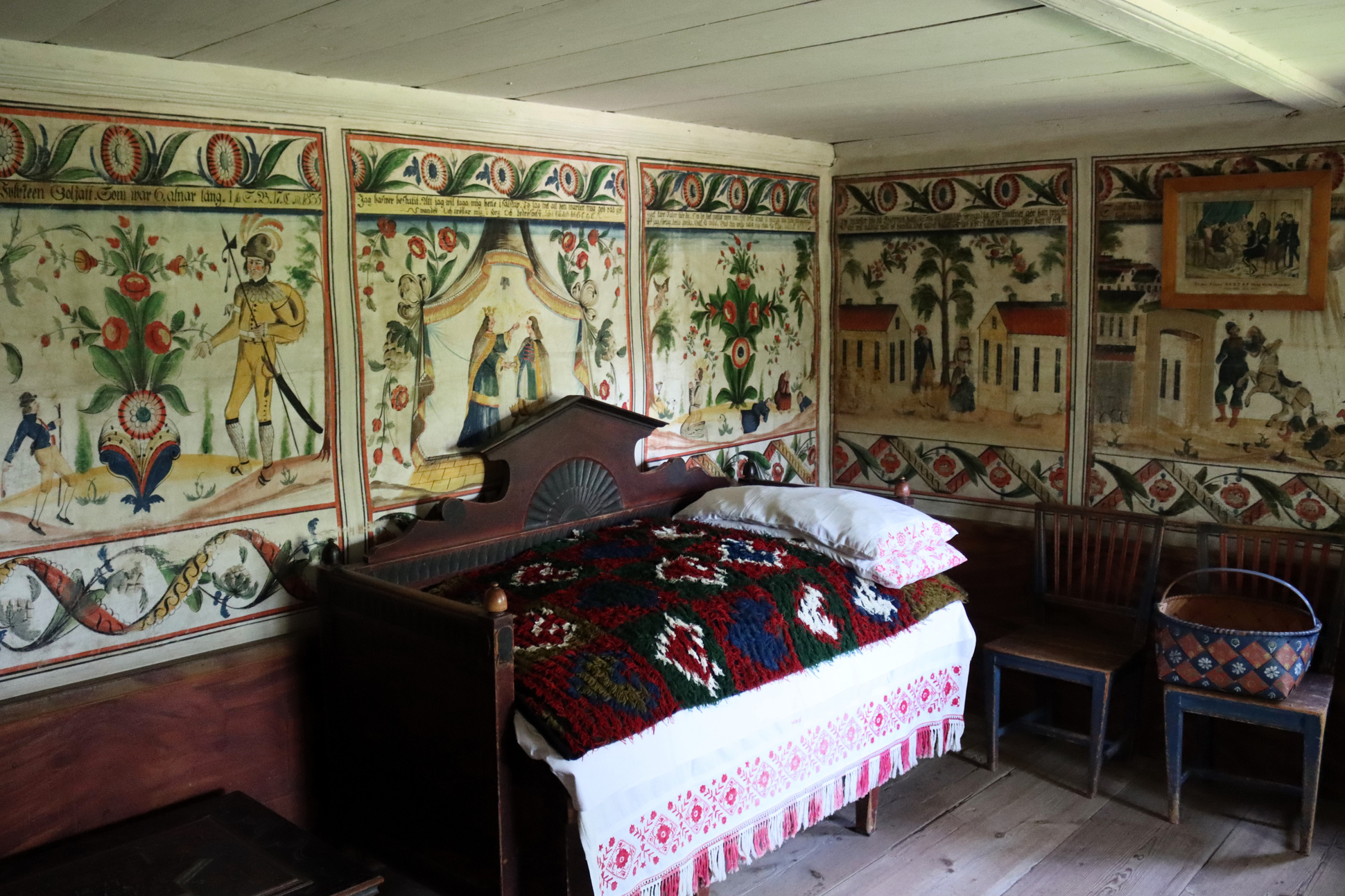
Delsbo guest bedroom
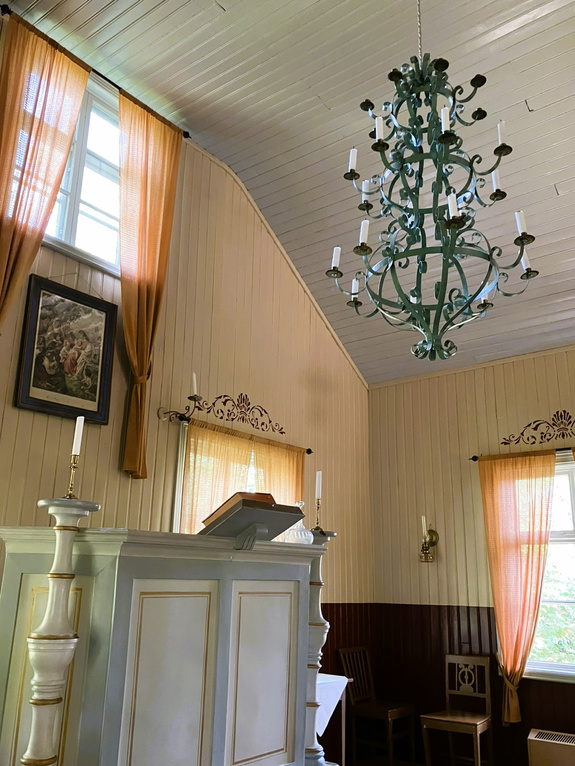
Seglora Church
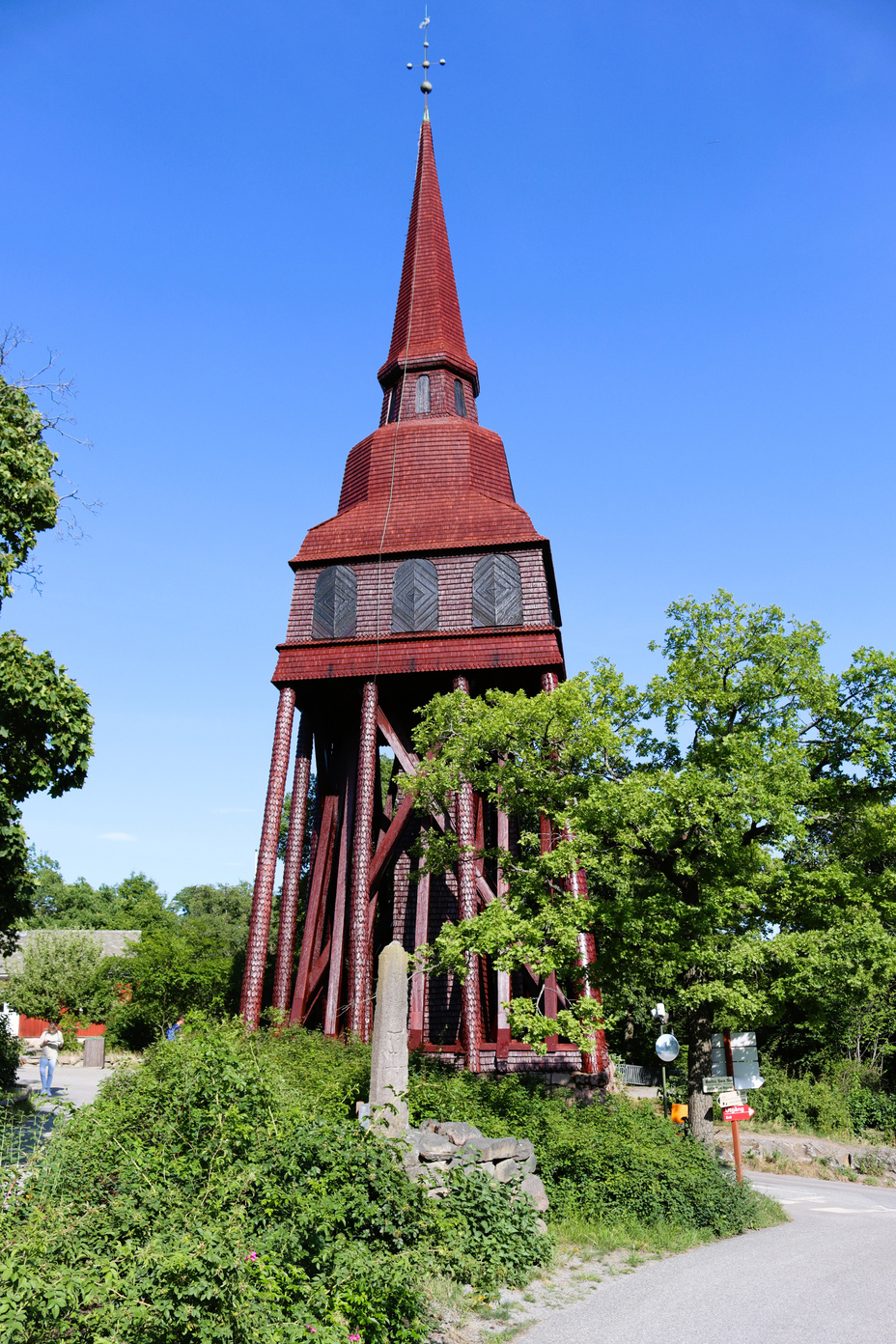
Hällestadsstapeln
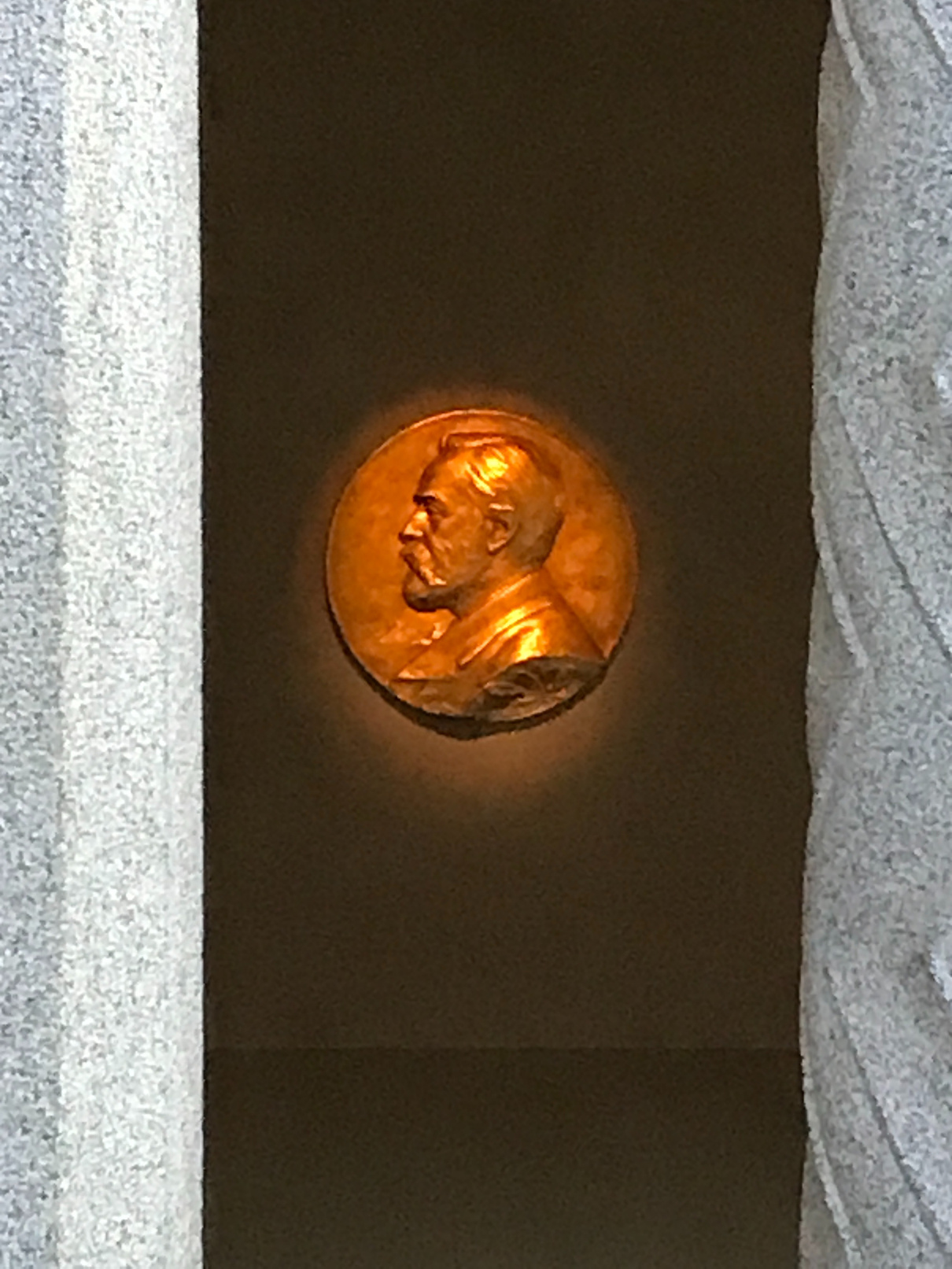
City Hall
City Hall
Stockholm City Hall and the Nobel Prizes
Our tour of Stockholm City Hall was conducted by our previous guide’s partner, Yiva. She was very knowledgeable about the civic life of Stockholm.
This architectural masterpiece is one of Stockholm’s major tourist attractions. We toured its grand halls, including the Blue Hall, the Golden Hall, the Council Chamber, and the Gallery of the Prince.
The City Hall, located on the bank of Lake Mälaren, is the venue for Nobel prize banquets. Good luck getting an invitation to the banquet held in the Blue Hall. It is the most coveted social event in Sweden!
The Nobel prizes in physics, chemistry, physiology or medicine, and literature are awarded in Sweden, while the Nobel Peace Prize is awarded in Oslo, Norway, for reasons unknown but stipulated in Alfred Nobel’s will.
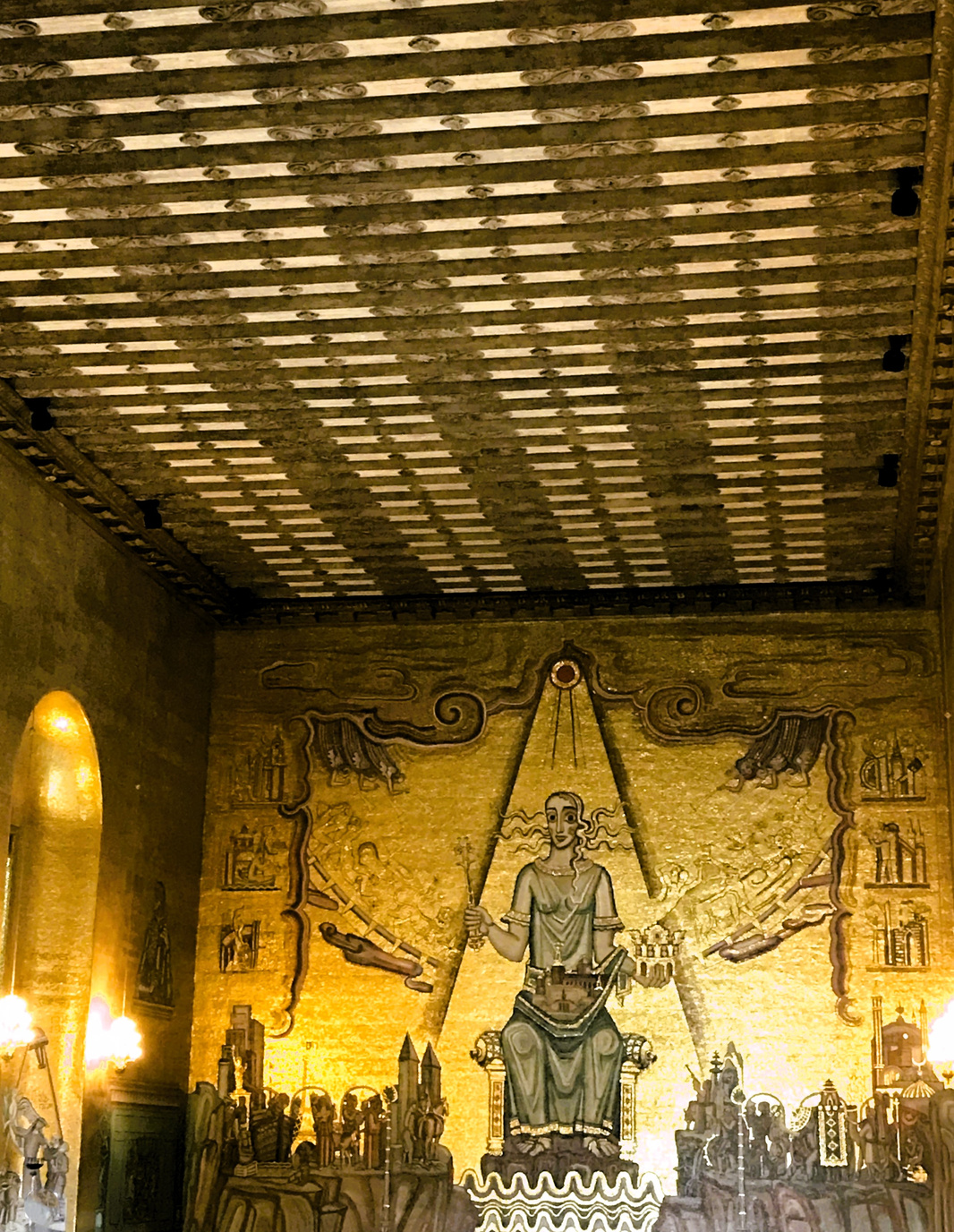
Golden Hall
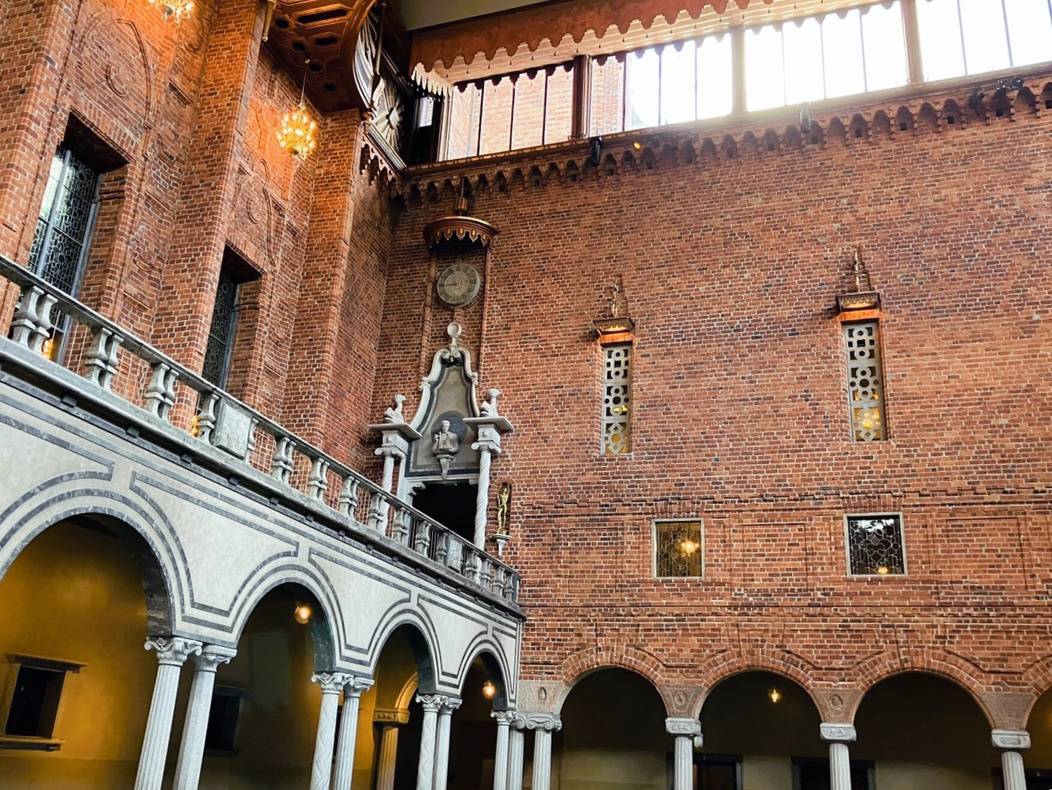
Blue Hall
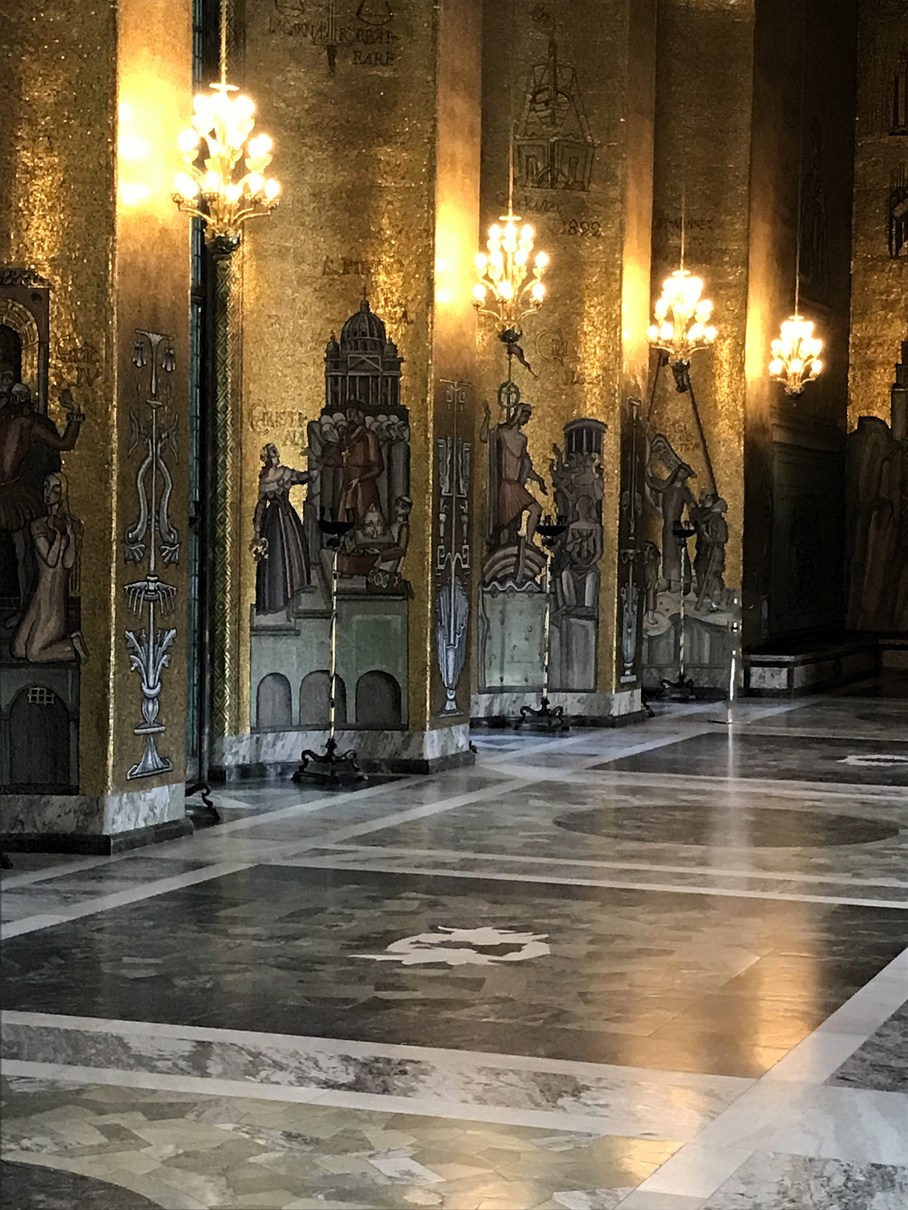
Golden Hall

Courtyard view

Prince’s Gallery

Council Hall
Kalmar
After two nights in Stockholm we bused south to Kalmar, Sweden, located on the Baltic Sea.
Guns and roses define Kalmar Castle.
A large garden leads us to the castle and its defensive gun positions. The castle’s Renaissance interior is well-preserved and extremely interesting. Kalmar Castle is an important site in Scandinavian history. Notably, two women were central characters in that history: Queen Margaret I of Denmark organized the Kalmar Union in 1397 and Anna Eriksdotter, commanded the Kalmar Castle garrison against Danish forces during the 1520 rebellion which ended the Kalmar Union.
The old town of Kalmar has cobbled streets, and a number of well preserved 17th and 18th century buildings. It makes for a fun saunter (thinking of Walt Whitman).

Ceiling panels in the King’s quarters
Kalmar Castle
Castle church
Gray Hall set for Easter feast
Kalmar square
Hear Ye, Hear Ye!
Varberg
After our detour to Denmark (to visit Copenhagen and Ærø Island), we returned to Sweden’s west coast, traveling north toward Norway along a large arm of the North Sea called Kattegat. This coastal region is defined by the Bohuslän archipelago.
On our way to Varberg, we stopped for lunch in Helsingør, home of Kromborg Castle (Hamlet’s castle). We then traveled to Varberg, our overnight stop and stayed at the utterly unique Hotel Gästis, where every room and public area was a library!
Our next mid-day stopover was at Everts Sjöbod, near the village of Grebbestad. We were treated to a wonderful lunch and cruise through part of the archipelago on a beautifully restored fishing boat. We would never have known of this place had it not been for Rick Steves!
The Tanum petroglyphs and museum (a World Heritage site) was another stopping point.
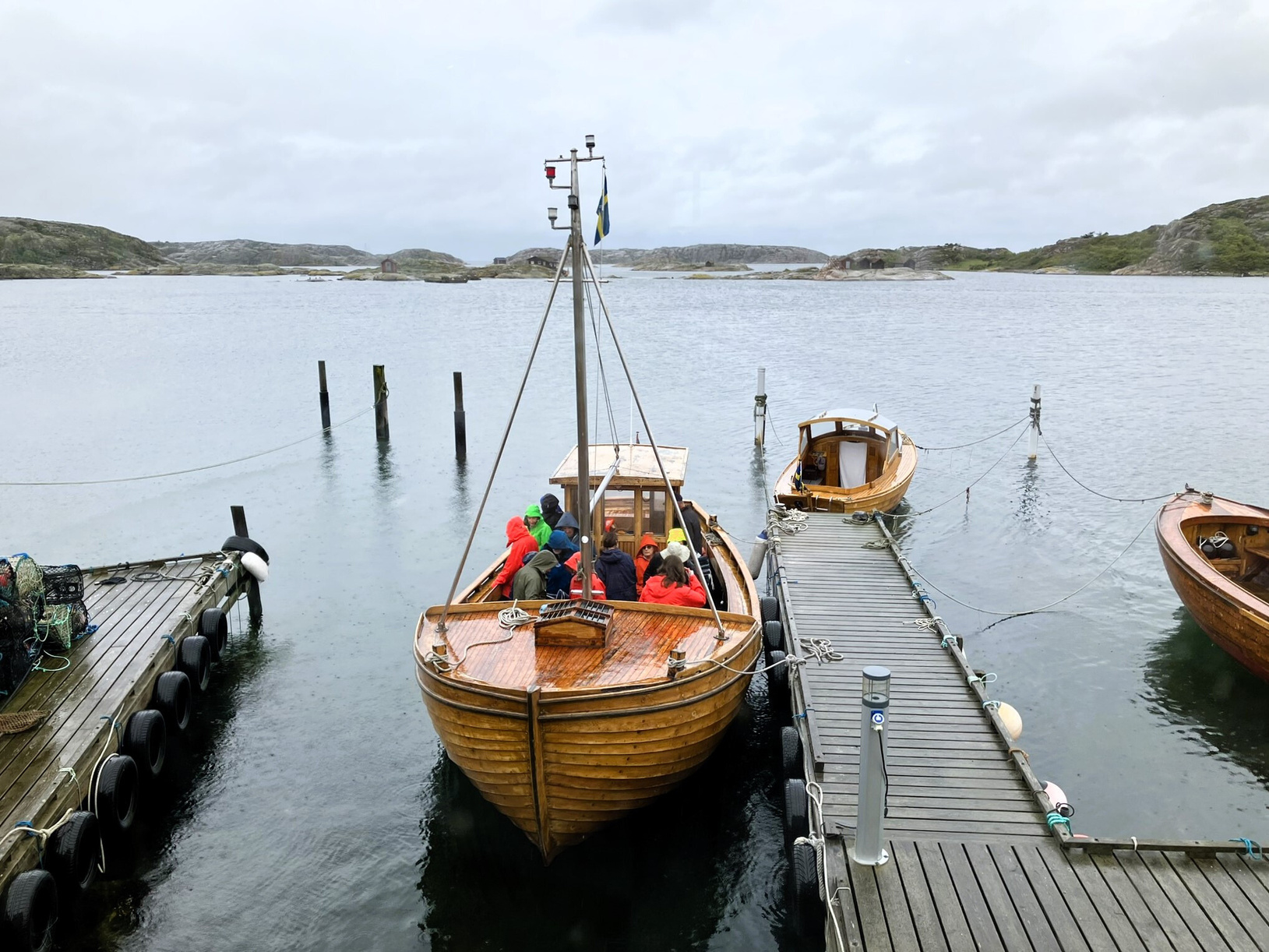
Sound of Dues street mural in Helsingør
Kallbadhuset open-air bathhouse in Varberg
Tanum rock carvings
Food court in old Helsingør shipyard
Hotel Gästis in Varberg
Lunch at Everts
Lite mer
A lite mer or little more
to highlight some of our favorite experiences in Sweden.
- The whole tour group was invited to Håkan and Yiva’s apartment in Gamla Stan, Stockholm where we had a wide ranging conversation from art to Swedish politics to their daughter’s fotboll (soccer) tournament and the approval ratings of Scandinavian monarchies (Sweden-not so great).
- While at Skansen, we heard lutheran hymns sung in the Seglora church during a baptism.
- On the way to Kalmar our group stopped at Söderköping for lunch and instead we checked out their very nice community library (once a librarian always a librarian).
- We are sauna fans (we have one) and so does the hotel Frimurare in Kalmar! Now we can say we took an actual Swedish bastu (sauna).
- At Hotel Gastis in Varberg you could take any book home; what a novel idea.
- The many parks and city squares of Sweden with kid-friendly fun (notice the rabbits below).
Checking out Söderköping library
Visiting our guide Håkan’s Stockholm home
Taking a sauna in Kalmar
Librarian’s dream hotel in Varberg
Watching all the wildlife :)
Hearing Lutheran hymns

Swedish Reflections
Introduction to the Nordic model of government and economies. It turns out that the citizenry does not feel oppressed by their form of Social Democracy. Quite the opposite, and they are bewildered by the American antipathy to these ideas.
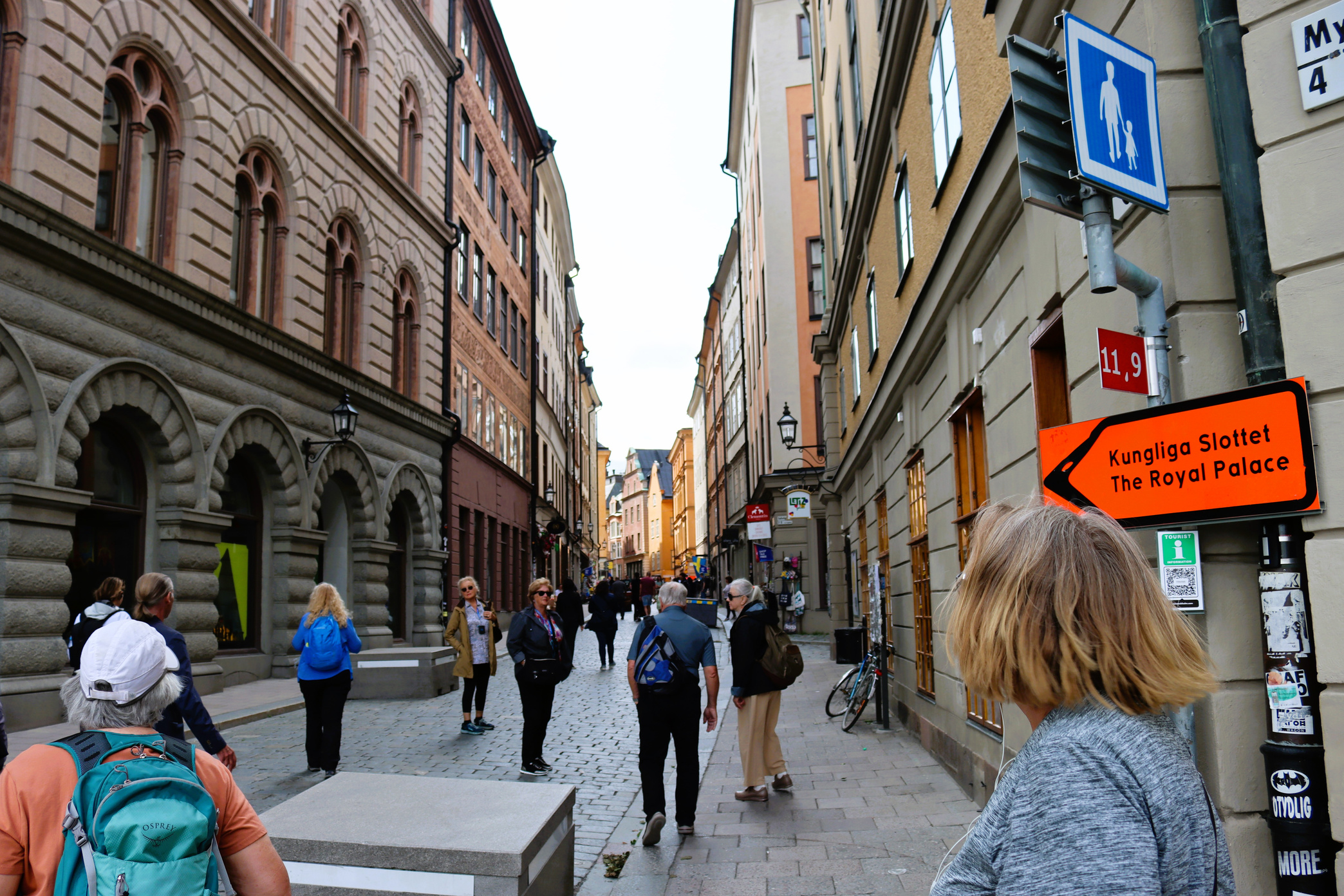
Swedish Memories
All the young families, especially fathers, taking their kiddos on excursions in their strollers. Swedish parental leave policies make it possible for families to grow together.

Swedish Moments
We stopped to purchase a dala horse and talked for an hour with a Danish musician (two musicians x talk = a long conversation). Jan was very tolerant.
Copenhagen
Our bus dropped us off at Hotel Bethel, which faces the colorful Nyhavn canal. The canal, built in the 1670s by King Christian V, connects the inner city to the sea. Danish soldiers and Swedish prisoners were ordered to excavate it.
Copenhagen was founded in 1167 by Bishop Absalon. In 1445, it was made the capital of Denmark and the residence of the Royal Family. Its early wealth came from herring fishing, but today it is a major economic and tourist center in Scandinavia.
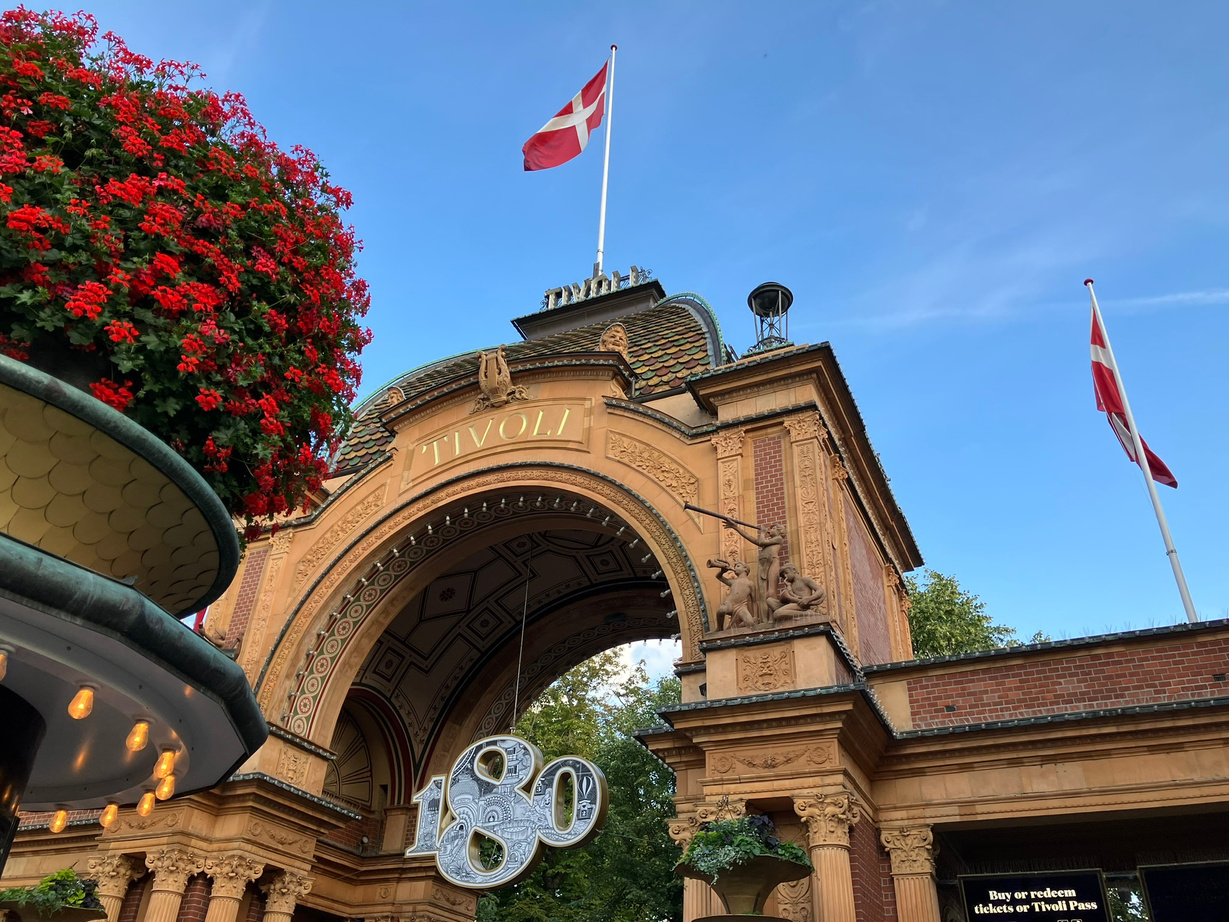
the city of Copenhagen
First impressions
Tall people, tall spires, and glittering canals. The city is ultra-clean, easy to navigate and has a laid back, cool vibe. We felt like we had stepped into Garrison Keillor’s Lake Wobegon, “where all the women are strong, all the men are good-looking, and all the children are above average.”


Observations
Copenhagen is a city of contrasts. It is very cosmopolitan, with a seamless mix of old and modern. It not afraid to show off its heritage, with its numerous museums and historical sites which are within easy reach. Copenhagen is very walkable, but has a wide variety of other modes of transportation for tourists including canal tours, and like in Stockholm, bikes are welcomed. Beautiful parks and architecture demonstrate a commitment to arts and culture.
Sightseeing
After crossing the Øresund Strait, which connects Denmark to Sweden, we arrived in Copenhagen. Our guide, Heidi resides here so we definitely had to abide by the NO jaywalking rule.
The first evening we strolled the Strøget pedestrian mall as a group and stopped for a wonderful meal while listening to Hans Christian Andersen (Richard Karpen) reciting his familiar stories (the original versions, not Disney-fied). On our way back to Bethel, Heidi purchased famed Danish ice cream for us all. What a lovely night.
The following morning we walked through the historical city center, stopping at Our Lady Cathedral, National Theater, and King’s New Square.
The afternoon was free for touring on our own and we visited the parks, palaces, and castles of Copenhagen.
King's New Square plaza
Court House “with laws shall the land be built”
Danish Royal Theater
Theater’s outdoor passage mosaic
Saint Nicholas Church
Bishop Absalon of Roskilde
Rosenborg Castle and Copenhagen Cathedral
We reserved tickets to visit Rosenberg Castle during our free time. This was fortunate, because many of the timed entry slots were sold out. The Castle was built in the early 1600s by King Christian IV and used as his summer home. The lavish interior with its extravagant wallpapers, delft-tiled bathroom, and painted putti ceilings demonstrated the power of the monarchy. The Castle and Danish treasury is still protected by the Royal Life Guards. The treasury holds the royal crowns, crown jewels, sceptre and orb, and other royal paraphernalia.
We stopped at the Copenhagen Cathedral, Church of Our Lady, as part of our morning tour. The location has housed a church since 1209, but the current Cathedral was built in the early 1800s. It has a very Lutheran look, nothing like the cathedrals we saw in Italy, Spain, or France.
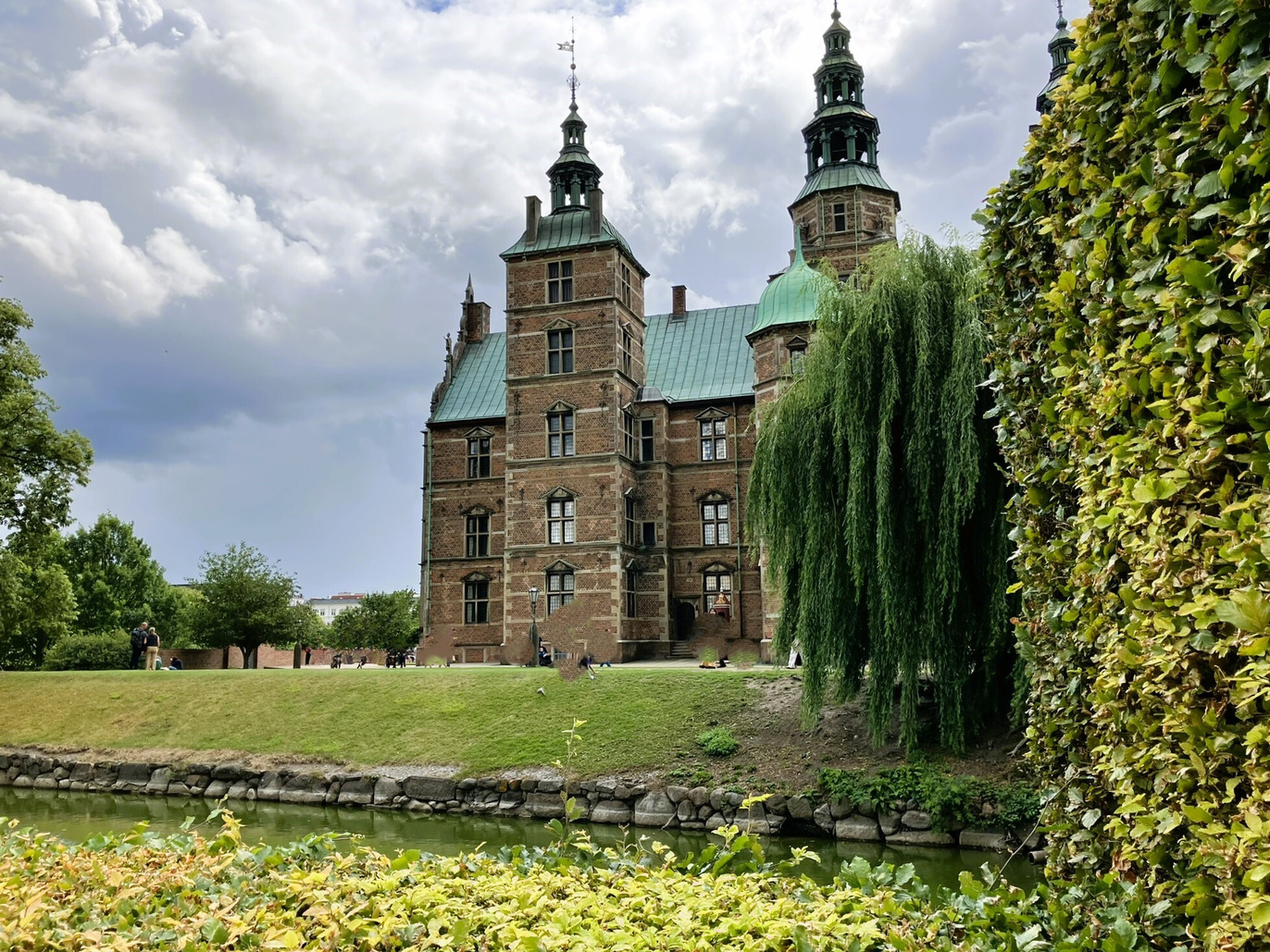
Castle and Cathedral
Cathedral batismal angel and Christ
Christian V's Hall, Rosenborg Castle
Copenhagen Cathedral
Christian IV’s crown
King’s Garden, Rosenborg Castle
Dowager Queen

Canals
Canals of Copenhagen
When we arrived in Copenhagen, we were thrilled at the location of our hotel. The Bethel sits right on the picturesque Nyhavn canal. Although a tourist area, our hotel room overlooked a peaceful courtyard.
It was a joy to return to the Bethel, because the Nyhavn area took on different looks at different times of the day with varying reflections off the water and ever changing activities.
Unfortunately, we did not plan well and were unable to take a canal cruise - something we will be sure to do the next time we are in Copenhagen.
Below are just some of the photos we took of the Nyhavn and other city canals.
Bethel Hotel (yellow) on Nyhavn canal
Busy Nyhavn canal
Frederiksholms canal
The boat we missed on Nyhavn
Historic buildings on the canal
The Marble Bridge
Copenhagen Palaces and Tivoli Gardens
Our walking tour of Copenhagen passed through Amalienborg Palace and Square. (This is a city of palaces.) The Queen and her son and his family live on the grounds. Heidi mentioned that the wife of the crown prince was often seen biking her young children to school. We also visited Christiansborg Palace, the seat of the Danish Parliament. We wandered by some minor palaces, including the Yellow Palace which now houses the Lord Chamberlain's Office, and Charlottenborg Palace built by Christian V’s step-brother in the 1670s where the Royal Danish Academy of Fine Arts is now located.
We spent the last night on our own visiting Tivoli Gardens where the constant motion, bright colors, and sounds explain why the Tivoli was the inspiration for Walt Disney’s parks. The 180-year-old venue was where we spent the early evening enjoying dinner at Mikkeller Færgekroen, a restaurant overlooking Tivoli Lake, evoking the look of a classic Danish inn.
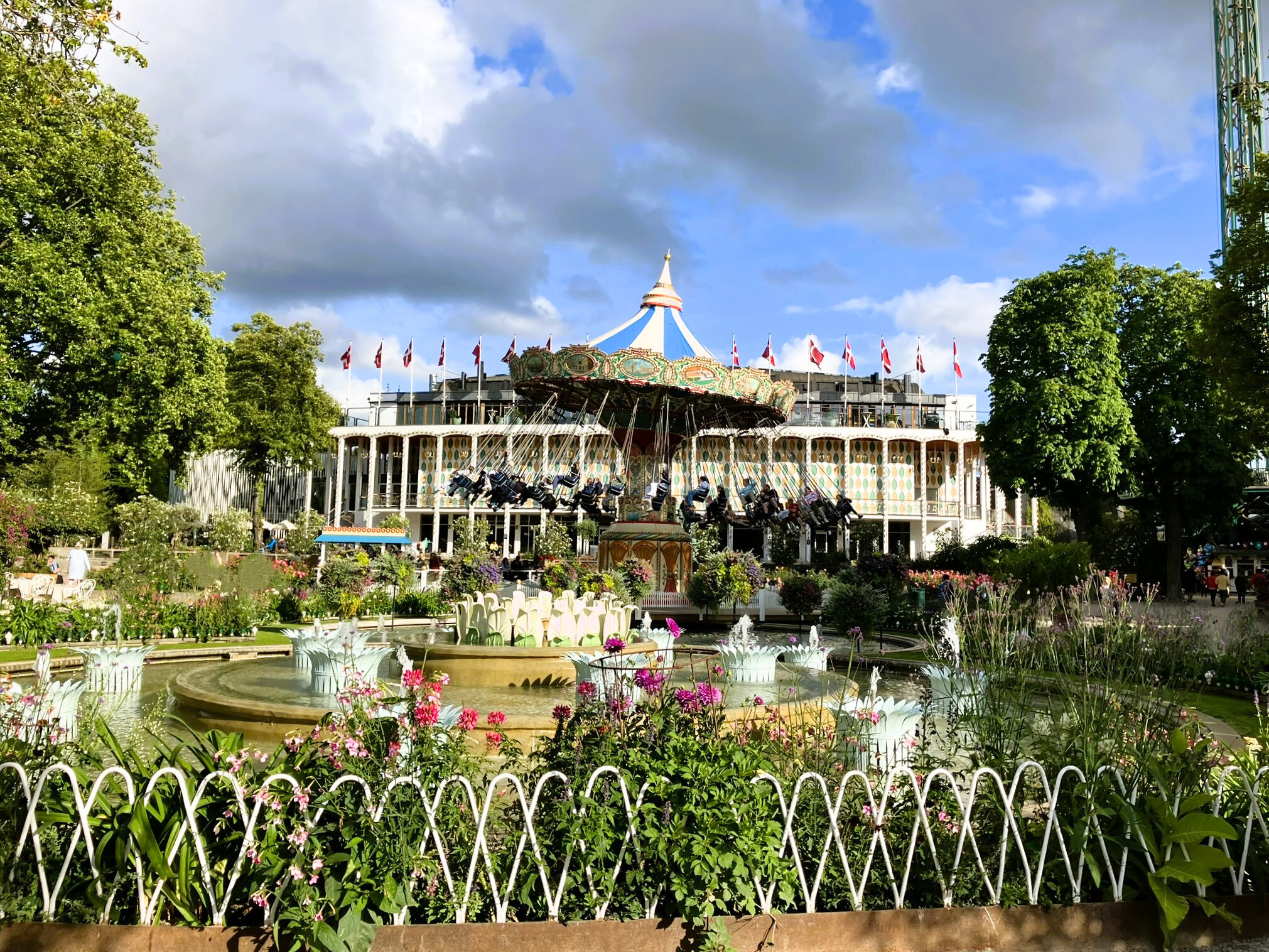
Palaces and Park
Tivoli open air theater
One of the Amalienborg Palaces
Amalienborg royal guard
Yellow Palace
Christiansborg Palace
Charlottenborg Palace
Roskilde
Our tour group left Copenhagen and traveled southeast toward Ærø Island. On the way we stopped at the city of Roskilde to visit the Viking Ship Museum and the Cathedral.
The Viking Ship Museum is located on Roskilde Fjord which eventually empties into the North Sea. It houses five original Viking ships reclaimed near the village of Skuldelev which is downstream on the fjord. Besides the well-researched and restored 1000-year-old Viking ships, we thoroughly enjoyed the Climb Aboard exhibit which recreates the experience of a day aboard a Viking ship at sea, from calm to stormy.
As one of the earliest religious buildings made of brick in Northern Europe, the 800-year-old Cathedral is a World Heritage site. It serves as the royal Danish mausoleum and sits in the center of the 1000-year-old city of Roskilde.
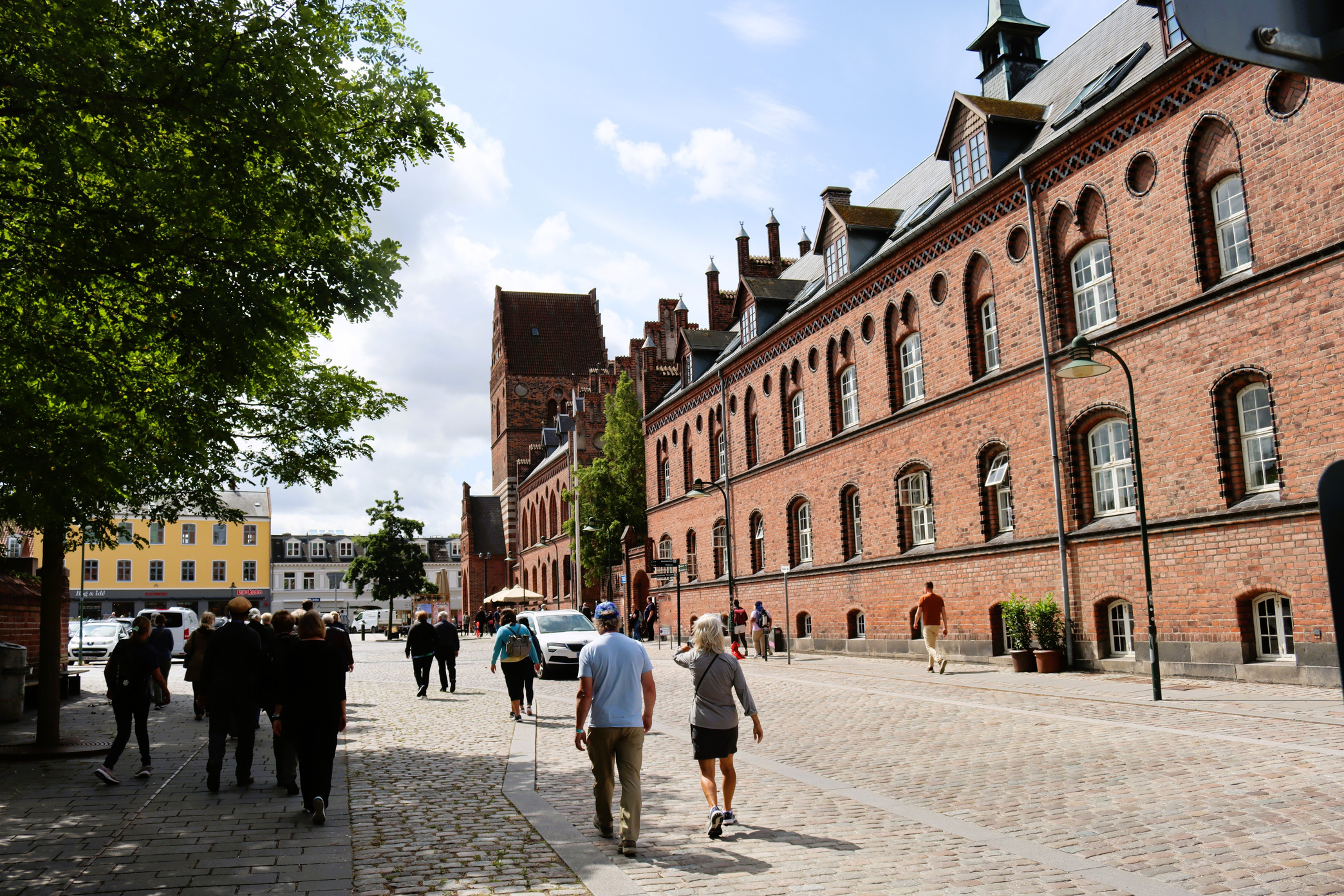
Roskilde Cathedral
Cathedral altar
Trolle’s Chapel
Queen Margaret I tomb
Royal tomb
The King’s Gate
Roskilde Cathedral
Skuldelev 3 Viking ship
Sea Stallion
Boat dock
Working axes
Bow under construction
Boatyard
Ærø Island
A ferry took us, along with our bus, from Svendborg to Ærø Island.
The Oxford Dictionary definition of ‘quaint’ must be: Ærø Island. The Old Town is most assuredly quaint, and makes one want to retire here as a quasi-hobbit. The surrounding neighborhoods are much more modern, and neat as a pin. The seaside bathing huts along the Vesterstrand are very picturesque. A drive through the countryside and villages of the island continues the definition of quaint. The farms and fields are very reminiscent of our mid-West. The entire island felt very at ease with itself.
Beneath the idyllic appearances, there is a dynamism to this community. Our group was introduced to the Ærø Eksperimentet, a program which encourages efforts by local citizens around sustainability, entrepreneurship, and resource sharing.
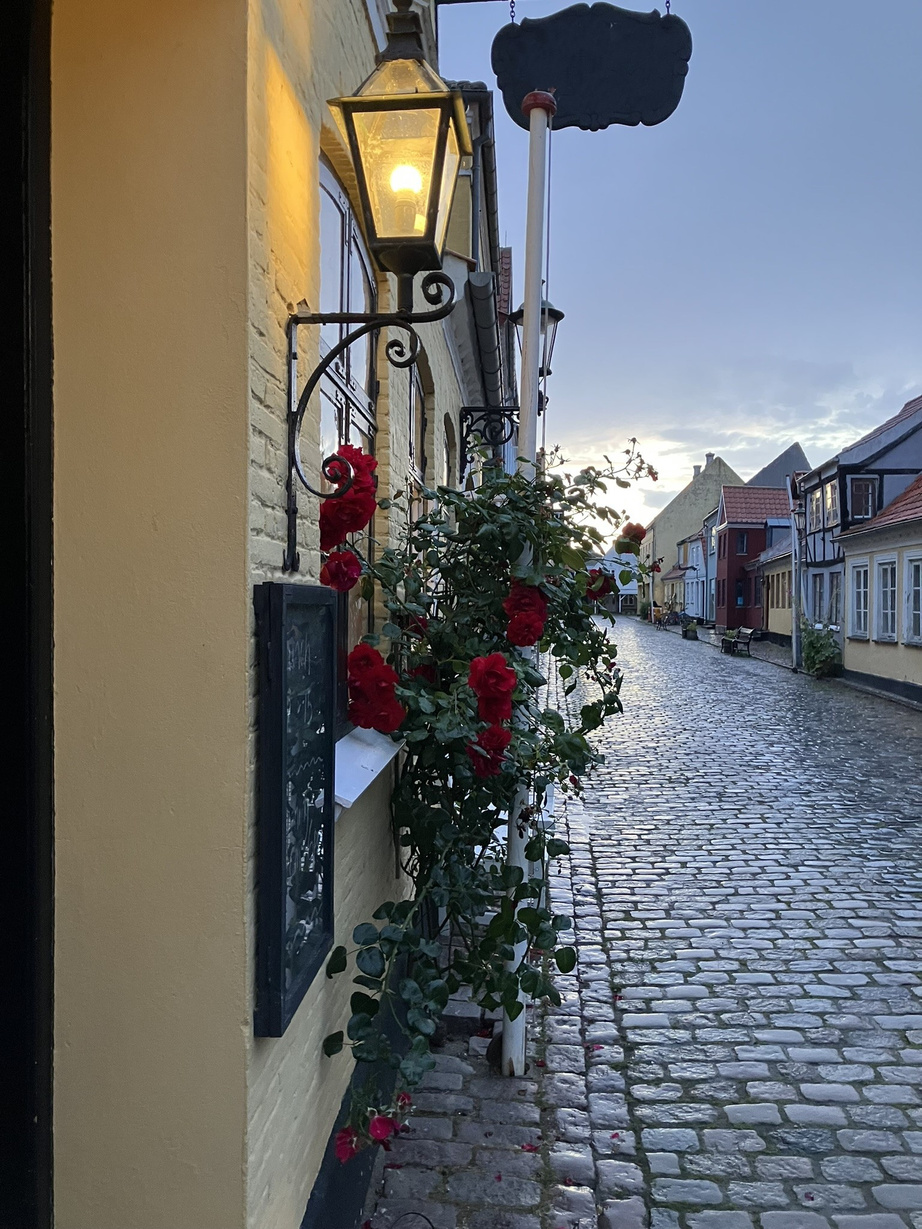
Ærøskøbing street
Ærø Island fields
Bregninge Kirke Church
Torvet Square
Hiking down to Voderup Klint
Ærø Whisky distillery
Huts at Ærøskøbing Vesterstrand
The Many Doors of Ærø
Lidt mere
A lidt mere or little more
to highlight some of our favorite experiences in Denmark.
- Hans Christian Andersen’s stories as told by Richard Karpen while dining at the Nytorv restaurant in Copenhagen.
- Relaxing in the quiet Bethel Hotel courtyard with a beer after walking through Copenhagen’s busy canal area.
- Admiring the restored Viking ships, as well as the new builds at the Viking Ship Museum.
- Ferrying to Ærø on a rainy, wind swept sea.
- Feeling very comfortable traveling through the wheat-filled countryside of Ærø.
- Finding Baltic Sea glass on the beach at Ærøskøbing Vesterstrand
- Danish lunch at Vindeballe Kro in Ærøskøbing where Randy successfully recreated the Danish flag with red berry pudding and cream (Rødgrød med Fløde).
Quiet courtyard room at Bethel Hotel
Storytelling by Hans Christian Andersen while we sipped Jägermeister
Rainy day ferry ride to Ærø
Lunch at Vindeballe Kro on Ærø
Skål” to Ærø whisky at Pa Torvet Hotel
Wheat fields of Denmark
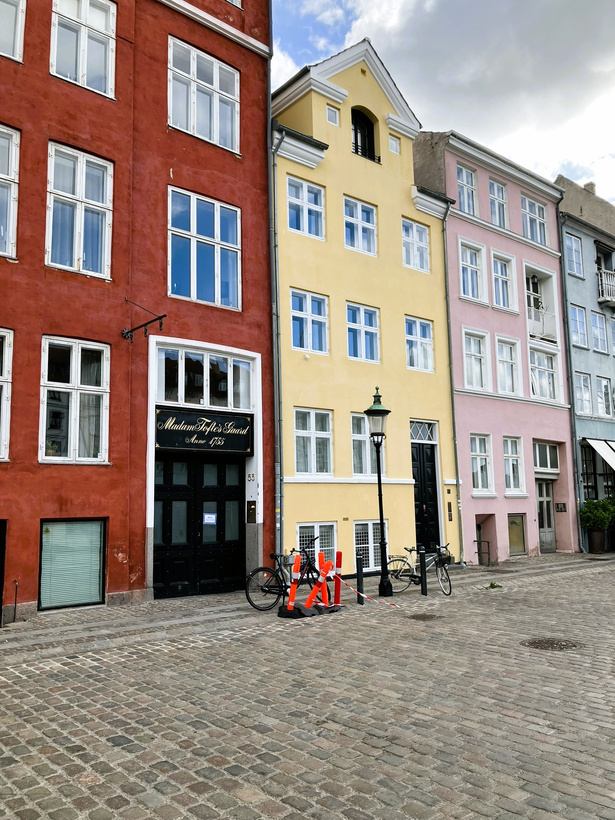
Danish Reflections
A happy, healthy, hygge country that counts on its people and their government to do the right thing.
Part of that happiness might be due to the lack of congestion on Danish roadways and its excellent public transportation. We also noticed that semi trucks made up a very small proportion of the vehicles on freeways.

Danish Memories
All the wonderful desserts and treats such as Rødgrød med Fløde (berries and cream in the shape of the flag as shown above), Æbleskivers (Danish pancakes), the huge variety of licorices, and our favorite, Flødebollers (chocolate puffs filled with whipped meringue).

Danish Moments
Jan was just a little anxious while traveling across the nearly 10 mile long (felt like 30) Øresund Bridge and tunnel system that connects Sweden to Denmark. Thanks to Johnny’s skilled driving we made it! It is an amazing engineering feat. During construction they found 16 unexploded World War II bombs on the seafloor!
See
Norway
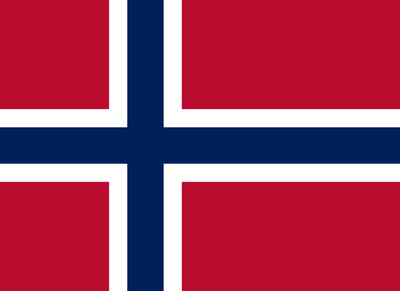
Oslo
A guest guide walked us through Oslo and shared its economic, cultural, and historical importance. As the capital of Norway and its largest city, Oslo lies at the head of Oslofjord. It was founded around 1050 by King Harald Hardraade. It was later destroyed by a fire in 1624 and rebuilt by Christian IV of Denmark/Norway who renamed it Christiania. The name was changed back to Oslo in 1924 and it has become an economic powerhouse. It is a city of commerce, arts, parks, and architecture. Oslo is also the home of the Nobel Peace Prize.
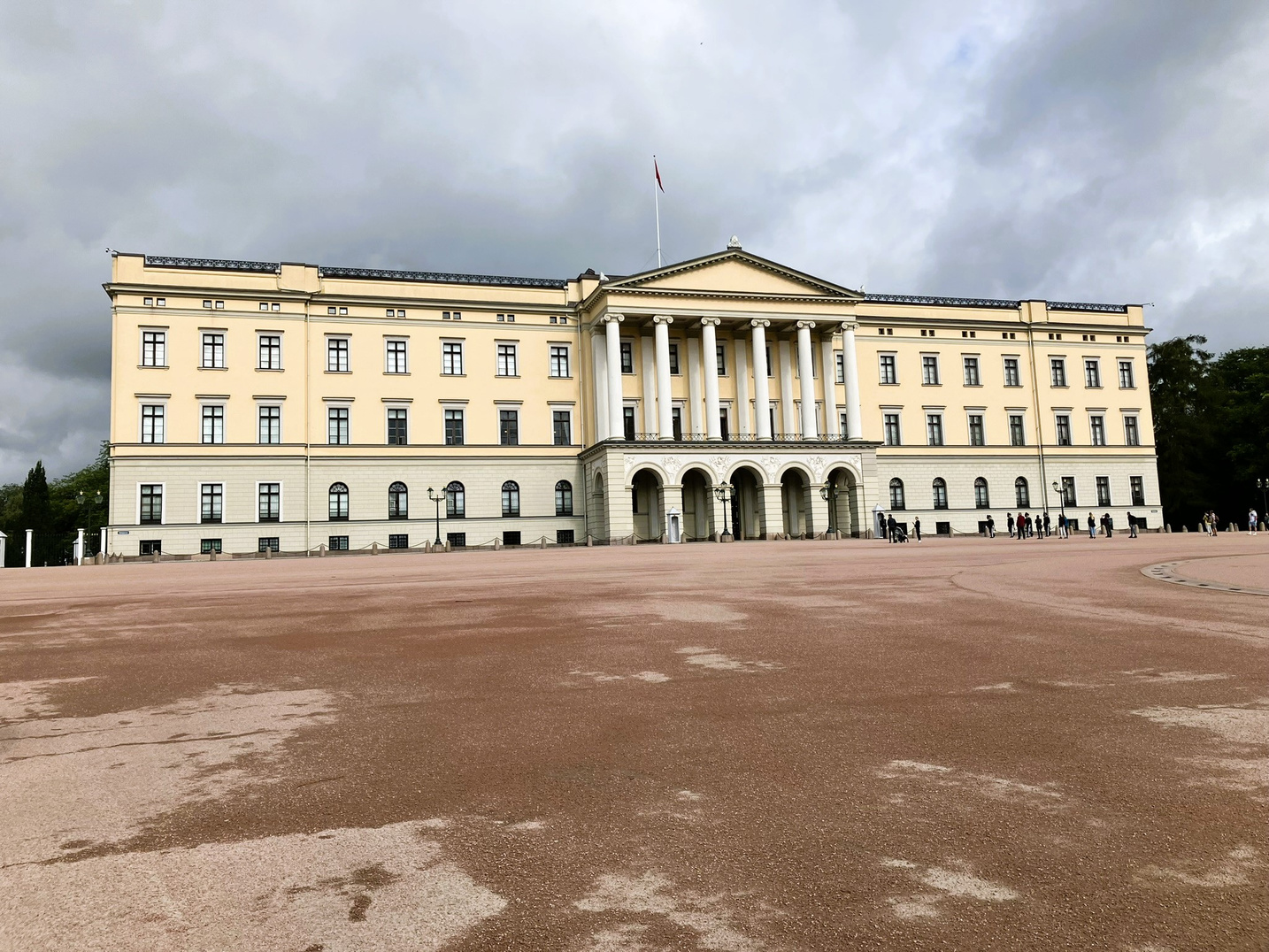
the city of Oslo
First impressions
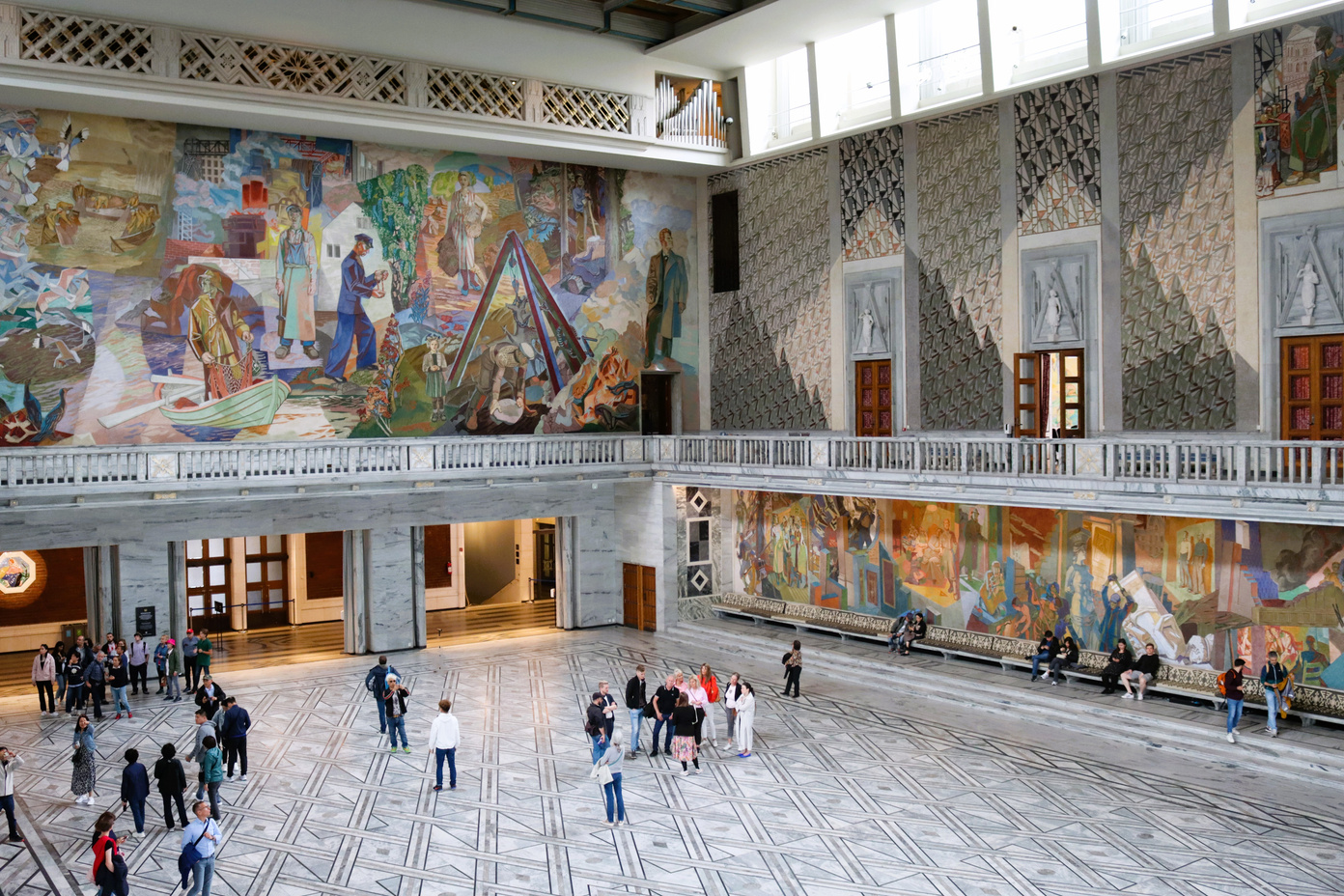
Sightseeing
We arrived in Oslo on a rainy afternoon and immediately went to Frogner Park, home to famous sculptures by Gustav Vigeland. The evening ended with a dinner at Rorbua, featuring reindeer tenderloins. They were delish.
The next morning the group toured the harbor and central city with a local guide stopping at many sites, including Akershus Fortress, Karl Johans Gate, the Gunnar Sønsteby statue, Royal Palace, Oslo University, and National Theatre.
One of the most interesting stories shared by the guide was when German ships tried to enter the port in 1940 to capture Oslo, the Royal Family, and parliament. A small group of soldiers manning an island fort used guns from the 1800s and 40-year-old torpedoes to sink a battle cruiser, delaying the German assault for several days. This gave time for the parliament and Royal Family to escape and setup a government in exile. The PBS series, Atlantic Crossing, is inspired by some of these events.
In the afternoon, we were free explore on our own and we spent time at City Hall and at the National Museum.
The same, but different from other Scandinavian capitals. Oslo appears to be a much more ‘modern’ city compared to Stockholm or Copenhagen and seems more a work-a-day city. Near our hotel, vocal pro-Ukrainian/anti-Russian demonstrations were taking place outside the Storting (Parliament) building, it was the only protest that we saw in Scandinavia, unlike other European countries we have visited.
Observations
It is hard not to notice the many memorials, statues and museums dedicated to Norway’s resistance efforts during WWII. Perhaps the reason is because it is a strong cultural touchstone. As Heidi told us, Norway experienced the"400-Year Night", a period when it was a vassal state ruled by either Denmark or Sweden until 1905 when they become a truly independent state.
In 1940, they were unwilling to relinquish their new found freedoms to the Germans without a fight. In doing so, they formed alliances to help protect their population and resources. After WWII, they recognized that strong alliances could help preserve peace and became a founding member of NATO.
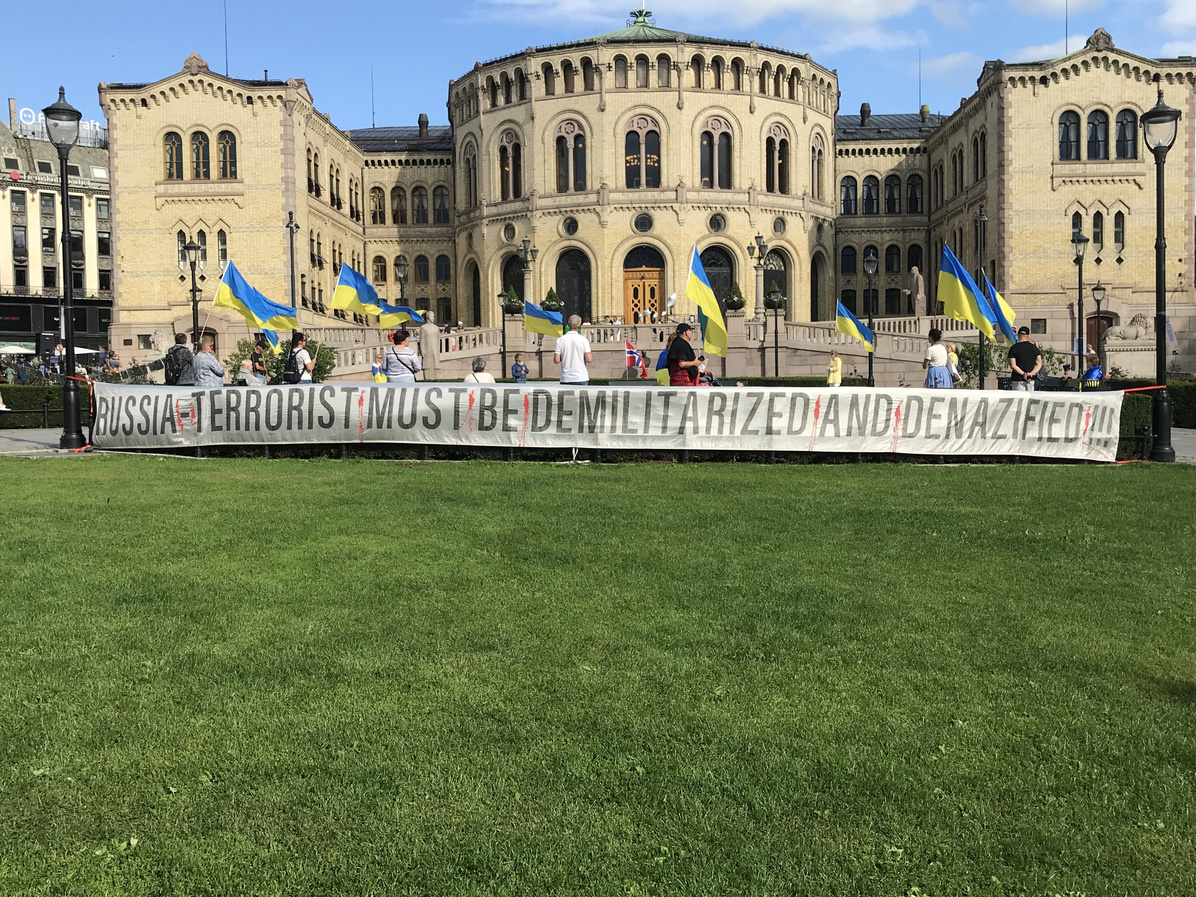
Floating sauna
Oslofjord
King of Norway, Charles III
National Theatre
Karl Johan Street
Patriot Gunnar Sønsteby
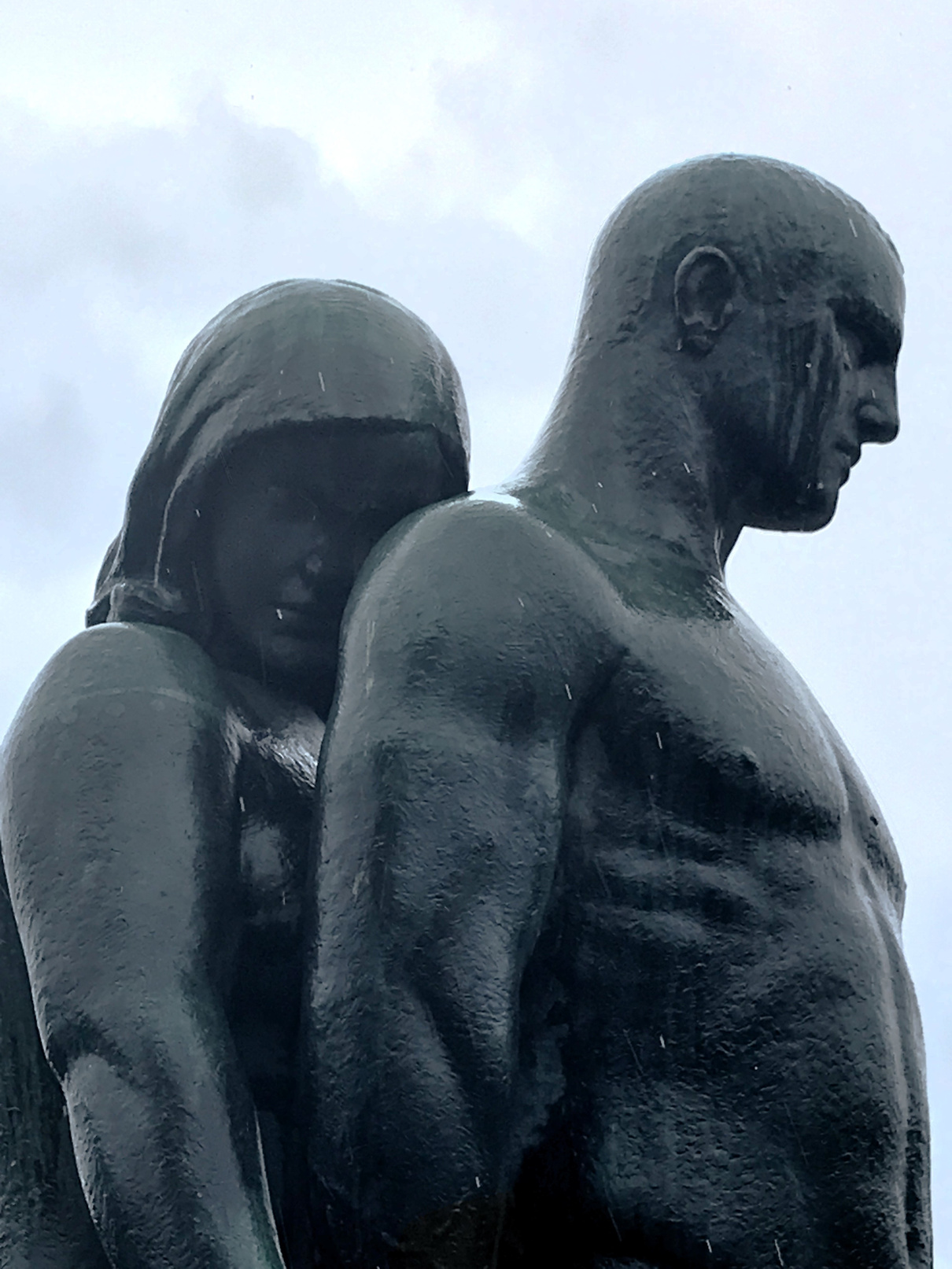
Frogner Park
Frogner Park
Our tour group had just driven in from the Swedish coast when we stopped at Frogner Park in Olso to view Gustav Vigeland’s sculptures. These granite and bronze human forms seen on a drizzly afternoon in muted light made them seem other-worldly.
Over 200 sculptures, each conveying the human condition - age, sex, emotion are intense. The ‘angry boy’ statue’s hand is shiny because many tourists have touched it for good luck. The park also includes a fountain and a tall monolith where over 100 bodies seem to be struggling or supporting each other as they climb toward the top.
We learned of Vigeland’s relationship with the city, in which he was given a building to work and live and in return he donated his works to Oslo. The project from design to installation took over 40 years. Vigeland died at the age of 73 in 1943.
The Monolith Plateau
Woman with hair
Angry boy
The Fountain
The Bridge
The Monolith
Oslo City Hall
On our free afternoon we visited Oslo City Hall and were just in time to join one of the docent-guided tours.
The building interior features beautiful murals and art celebrating the history, culture and working life of Norwegians. The main floor is the location for the Nobel Peace Prize ceremony. The second floor features the Ceremonial Gallery with tapestries and smaller rooms artfully decorated, such as the Munch Room. The docent stated that the number of civil marriages is increasing and many take place in the Munch Room with his painting ‘Life’ as a backdrop.
The exterior of City Hall is also decorated with sixteen wooden friezes with Norse gods and mythology as the theme.
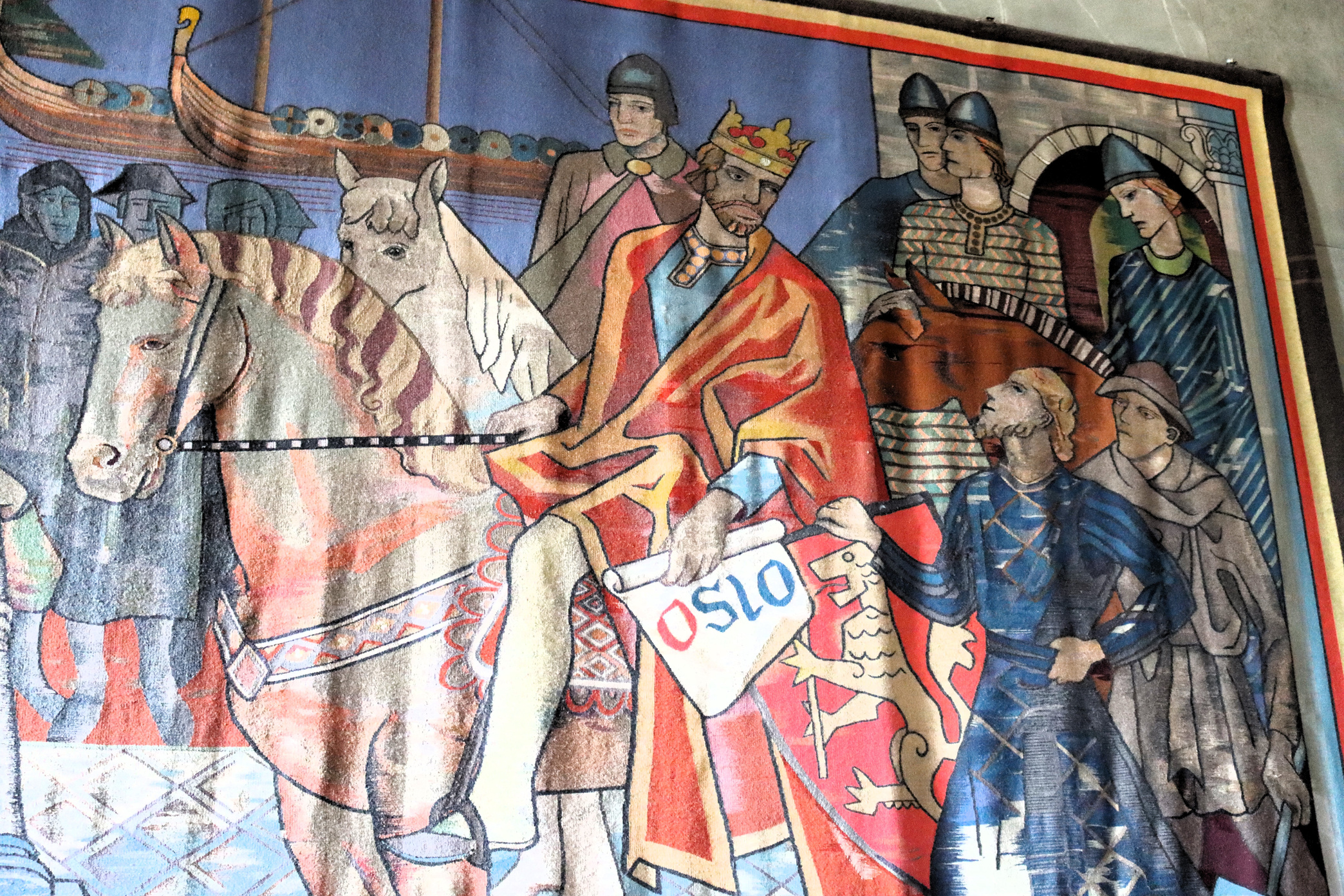
City Hall
Edvard Munch’s ‘Life’ painting, Munch Room
Hall of murals where the Nobel Peace Price is awarded
Carving of Odin’s wife
Alf Rolfsen's occupation frieze
Tile depicting the fishing culture
2nd floor view of harbor
Royal Palace of Norway and Akershus Fortress
The Royal Palace, built in the 1840s, is located at the end of Karl Johans Gate and is home to the King and Queen. It is patrolled by the King’s Guard who are charged with protecting the Royal Family. The Palace is surrounded by gardens. Our guide reported that the population’s view of the monarchy is positive. Queen Sonja is beloved for her love of nature, particularly hiking. Queen Maud was Norway’s first queen (1906-1938) after the break from Sweden. Her relationships with British royalty, allowed King Haakon VII and their son to escape to London during WWII.
Starting in the early 1300s, Akershus Fortress successfully protected Oslo until it was surrendered to Nazi Germany in 1940. The area includes a castle, and two museums, including the Norway’s Home Front Museum. Forty-two Norwegian resistance fighters were shot by the occupying Nazis during WWII and a memorial stands near the execution site, stating “They fought, they fell, they gave us everything at this place”.

Palace and Fortress
King Haakon VII, resistance museum at Fort
Akershus Fortress
Palace statue Queen Maud
Akershus Fortress wall
Monument to 42 executed by Nazis
The hiking Queen-Sonja
Lærdal
On the way from Olso to Lærdal, Norway we visited the
- Maihaugen Open Air Museum in Lillehammer, and
- Borgund Stave Church in Borgund.
Once we arrived in Lærdal we spent the night in the lovely Lindstrøm Hotel tucked into a valley with mountains on our doorstep. After a dinner together at the hotel, we strolled through the quiet village.
The next morning we left Lærdal and began our travels up through the Jotunheimen mountain range on corkscrew, cliffhanger roads where sheep ruled the day. According to Heidi, sheep can graze anywhere, and if you hit them on the road (where they like to congregate) the fine is 700 kroner. The vistas were breath-taking at Stegastein Overlook. Once we summited, we headed back down toward Aurland for lunch and then continued to Flam where we boarded the electric ferry. It took us through Sognefjord to Gudvangen where we rejoined Johnny and the bus to continue to Bergen.
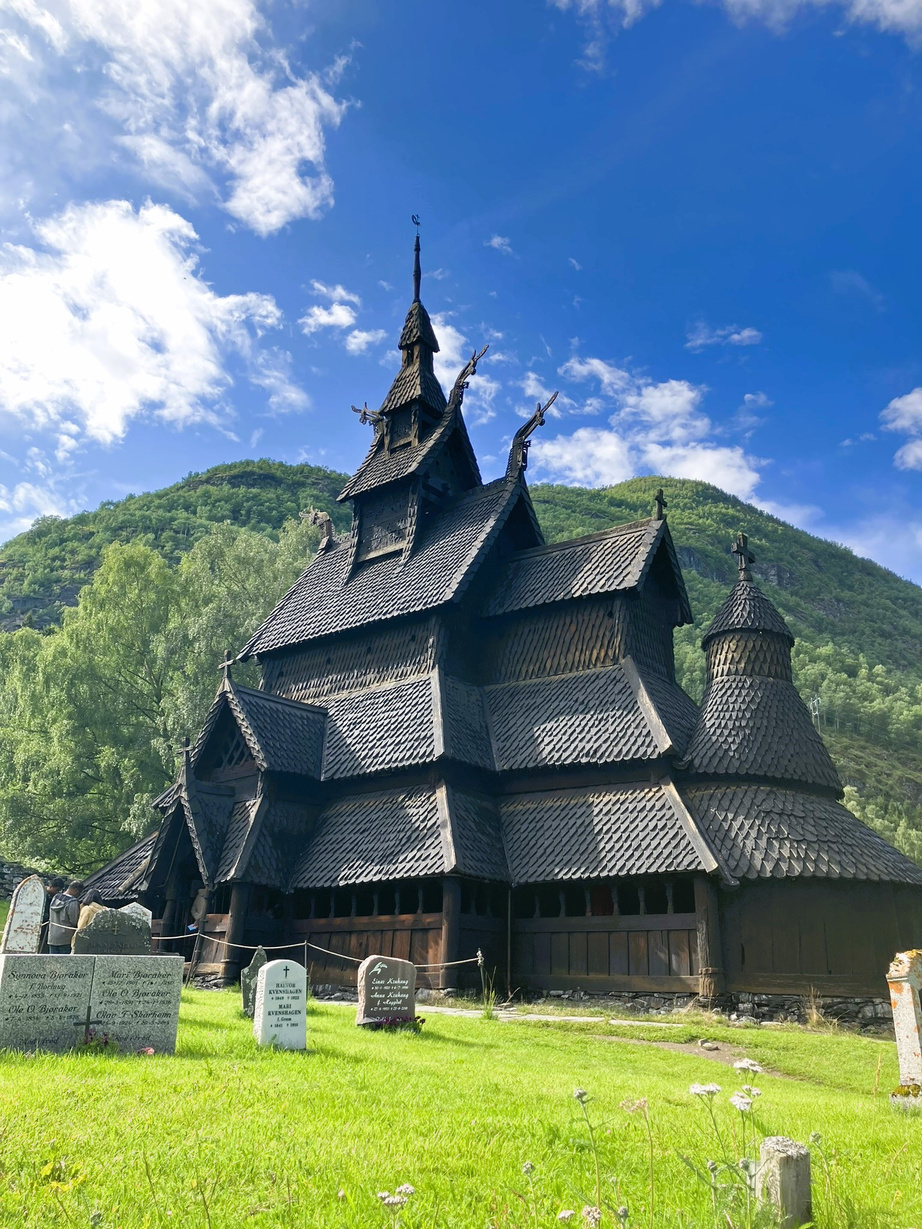
Borgund Stave Church interior
Laerdal view
Telephone booth library
Laerdal homes
Old Lindstom Hotel
Laerdal
Maihaugen Open Air Museum
Bjornstad farm
Fisherman’s chapel and cottages
Peer Gynt loft
Turf roofed Sundt house
Garmo Stave church
Rosemaled carved cabinet
Village of Aurland and Stegastein Overlook
Toilet view at Stegastein
Mountain views
Sognefjord ferry
Bergen
In Bergen, the tour focused on historic Bryggen (another UNESCO World Heritage site) which faces the North Sea. It was built by the Hanseatic League, a medieval Germanic monopoly that controlled trade throughout Northern Europe from 1250-1750. Bergen provided the fish (cod) which was one of the essential components of the Hanseatic League trade system. Its location on the fishing grounds created great wealth and Bergen became the first capital of Norway (a friendly rivalry with Oslo still exists).

the city of Bergen
First impressions
Bergen seems older than Oslo and still carries the feel of a working wharf - where cod was king. The colorful buildings along the harbor are reminiscent of Copenhagen’s canal townhouses. Bergen is tucked into low mountains (7 to be exact) which is very different than Stockholm and Copenhagen. Also, the city biking culture does not seem as strong.
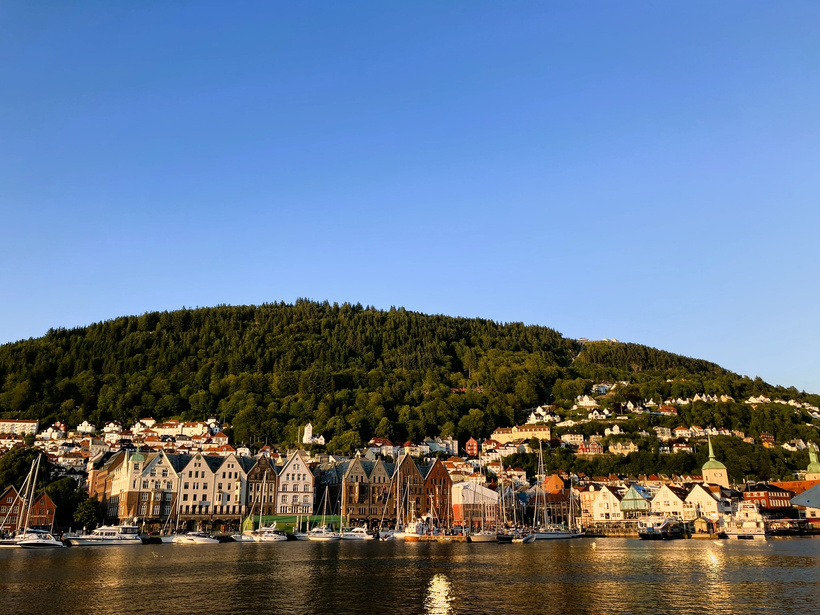
Observations
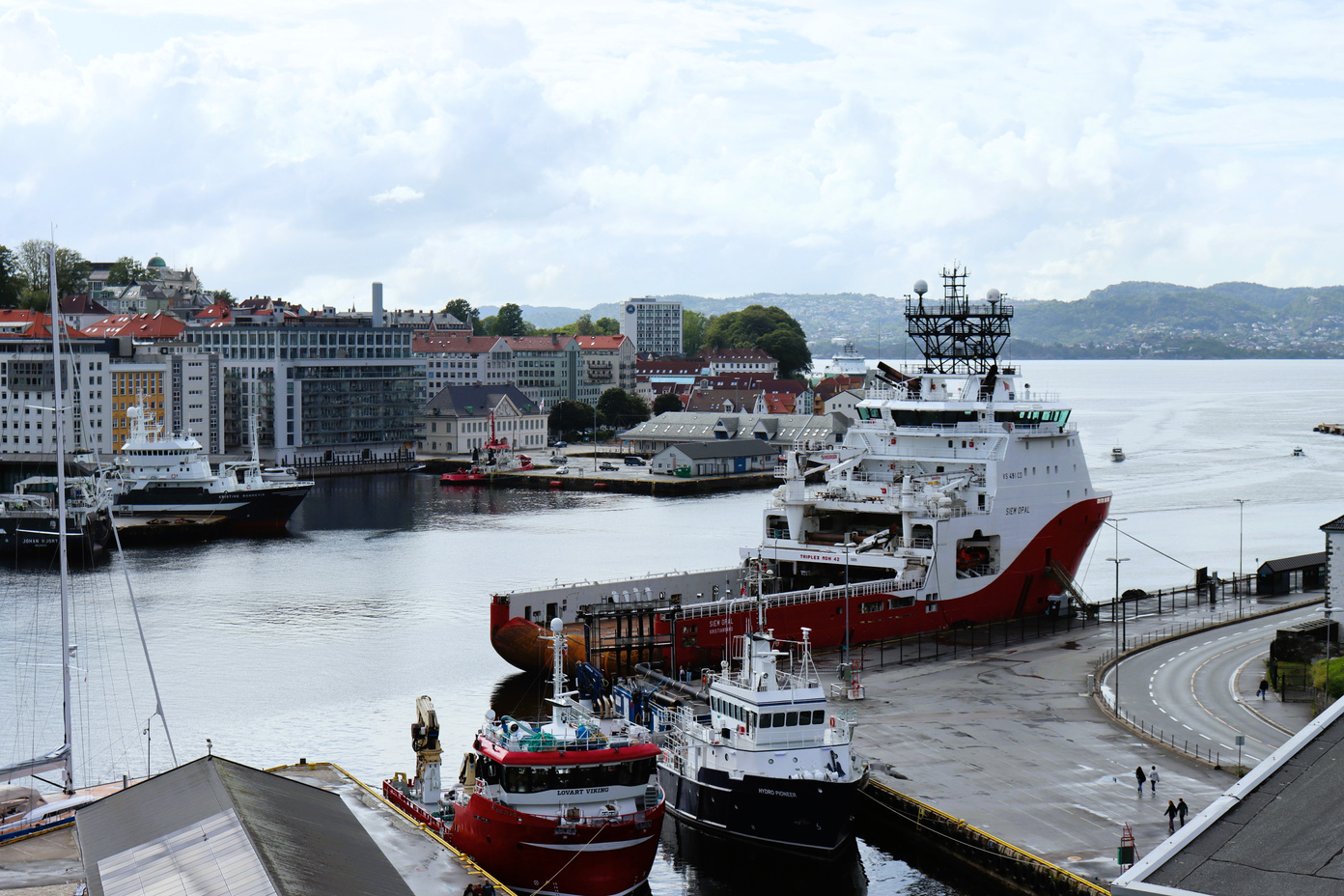
The tourist area of Bergen still conveys a sense of its original sea-faring origins. In Copenhagen, as in some of the other cities, we saw a lot of pleasure boats, whereas in Bergen there seemed to be far more commercial vessels at dock. As we ventured out of the city center we quickly entered residential areas that were clean, quiet, and tourist-free.
Bergen seems to be a city where industry, commerce, and tourism co-exist.
Sightseeing
After our harrowing (just kidding) drive through the mountains we continued to the city of Bergen, arriving early evening. Hotel Rosenkrantz, a block from the harbor in the Bryggen area, was our home for the next two nights.
The first evening we strolled through historic Bryggen on our own, visiting the fish market for dinner and enjoying an ice cream covered waffle for dessert.
The next morning, Heidi guided us through the wharf area and we all took the funicular to Mt. Fløyen with its spectacular views of the harbor.
The afternoon was spent hiking on our own and saving a young mother and child from a seagull attack (they had french fries :). That evening we gathered as a group for a goodbye dinner, to reminisce, and rejoice over a wonderful trip!
The following day we met for breakfast and said our final farewells.
Statue of violinist, Ole Bull
Bryggen wharf
Passage through Bryggen
Historical home 1480 - 1912
Park pavilion
Well-endowed unicorn
Rosenkrantz tower home of King Magnus
Tour guide Heidi trying to stop our group from jaywalking!
Rosenkrantz Tower home of King Magnus
Bryggen at dusk
Vafleriet waffle, yum
St. Mary’s Church
King Håkon's Hall
Edvard Grieg’s composing cabin
Fløibanen funicular to Mt. Fløyen
Top of Mt. Floyen
Tørrfisk or dried cod
Shop with traditional Bunad
Playwright Henrik Ibsen
Litt mer
A litt mer or little more to highlight some of our favorite experiences in Norway.
- While waiting in the Oslo City Hall security line we had a nice conversation with a young officer who had family in Wisconsin. He knew of the Green Bay Packers, and followed the Oslo Vikings team - small world.
- Lunch at Mt. Floyen, where the pølses (hot dogs) were slathered in wonderful toppings.
- Traveling on the Sognefjord ferry and experiencing the dark fjord waters with steep mountains and waterfalls wrapped in mist.
- Bryggens Museum where our guide also took us on a walking tour that included the merchants’ meeting hall and Bergen's medieval wine vaults.
- We met a Norwegian couple who live on an island off Bergen and bought them a drink. An interesting conversation about the oil industry and Norway’s plans for what would happen when the oil runs out ensued.
- On our own dime and time we traveled by train to Troldhaugen, home of Norwegian composer Edvard Grieg, to attend a piano concert. It is a beautiful site.
- Randy spent an afternoon kayaking the Bergen Øygarden Islets.
Beauty of the mountains
Beauty of the fjords
Fika!
Scandie interior design
Visiting the open-air museums
Enjoying pølses (hot dogs)
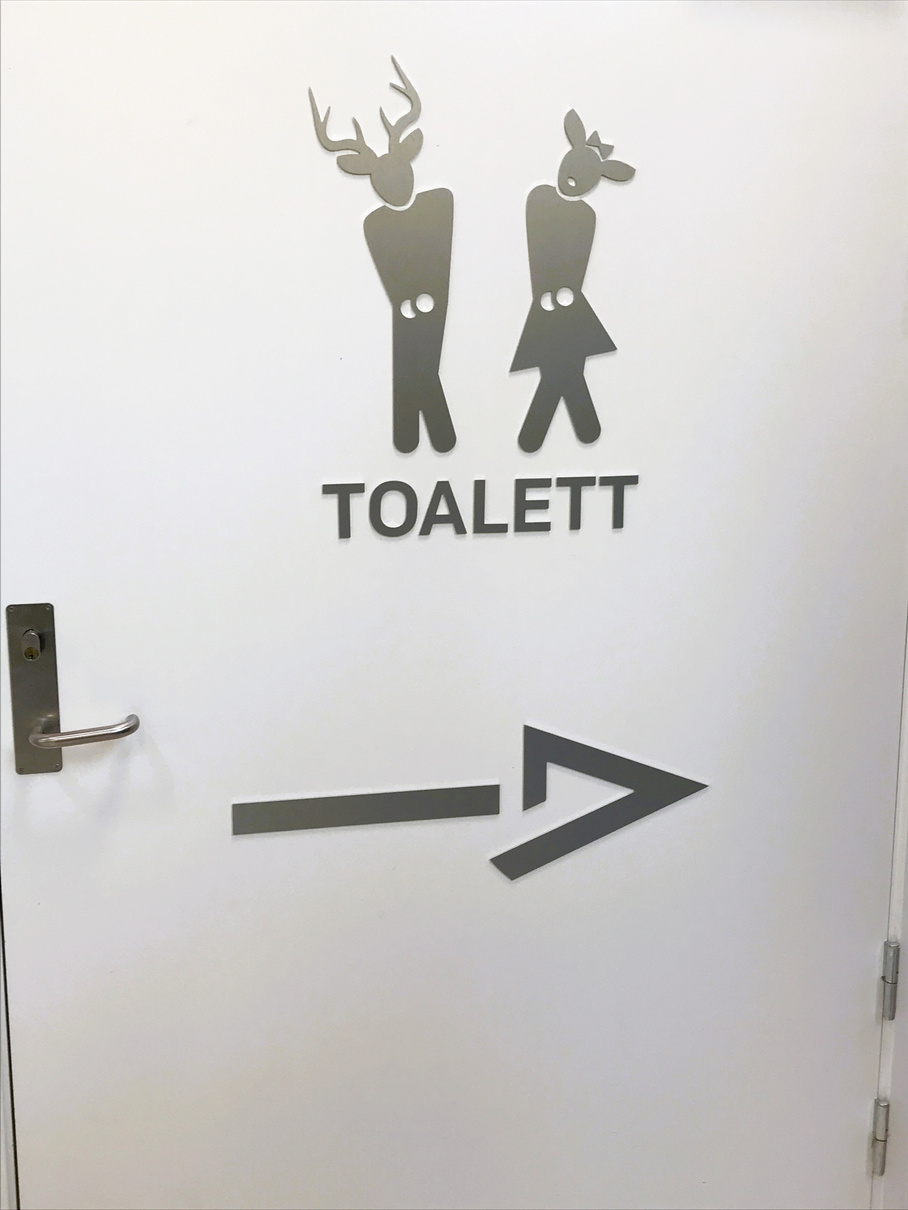
Norwegian Reflections
Citizens seem to be relaxed, enjoy the outdoors, have fun hanging out together, and hold fewer hang-ups about sex, bodily functions, etc. Jan has Norwegian roots and felt right at home!
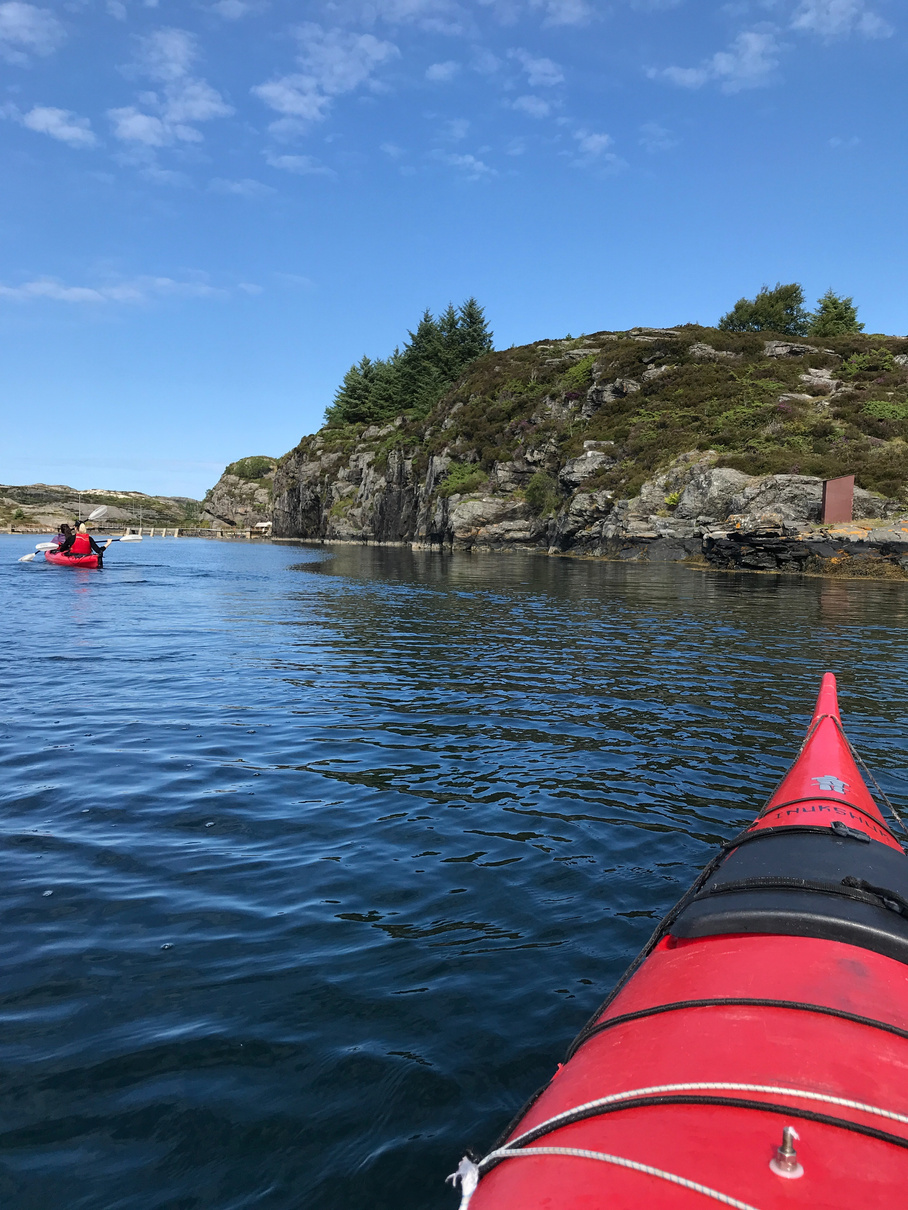
Norwegians Memories
Connecting with Jan’s cousins who live in Stavanger, south of Bergen.
Randy joined a guided kayaking tour of the Bergen Øygarden Islets.
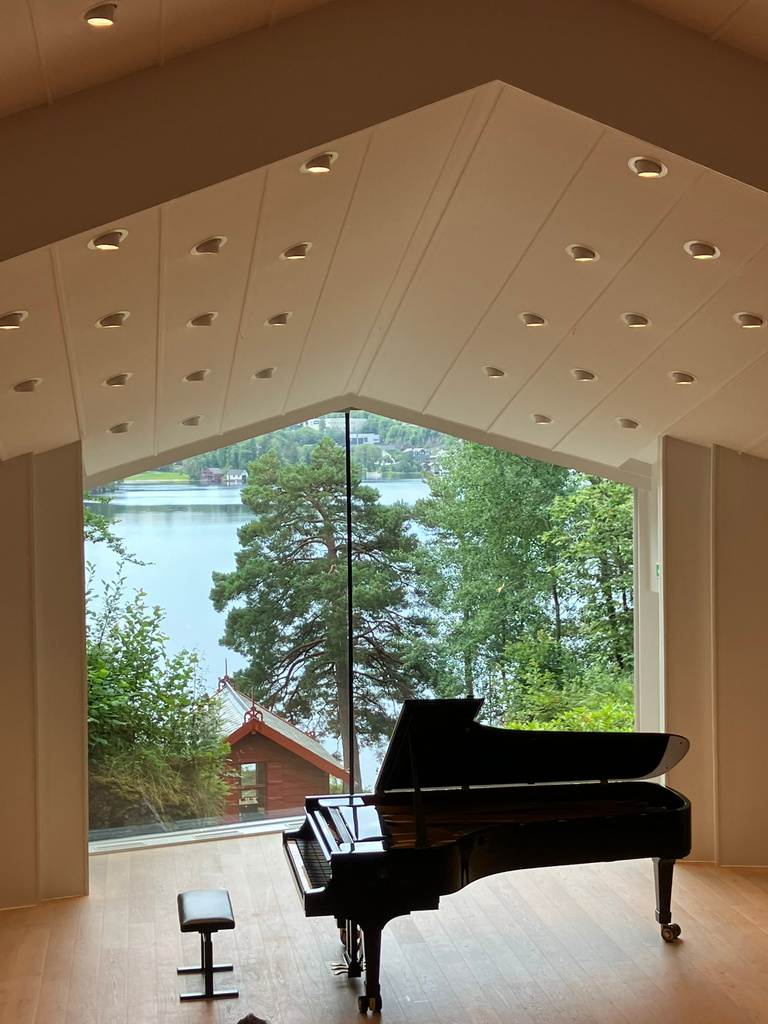
Norwegians Moments
Attending a concert at Edvard Grieg’s home, Troldhaugen. Later that afternoon we stopped at a music store in Bergen for a conversation with the owner and purchased sheet music by Greig for Randy’s sister, who is a piano teacher.
Hygge home
Our Rick Steves tour to Scandinavia made a bigger impact on us than our self-guided travels to Italy, Spain, and France. We believe it was because our guides and tour experiences provided a deeper understanding of the cultural, political, and economic differences and similarities of those countries. It could have also been related to our Nordic/Northern European genetics and democratic dispositions.
Beyond the experiences which expanded our worldview, we brought home a few items and activities that help us be mindful of the beautiful life found in the countries of Sweden, Denmark, and Norway.
Cheers to travel, Cheers to life!


Vintage textiles found in thrift shops and other fabrics
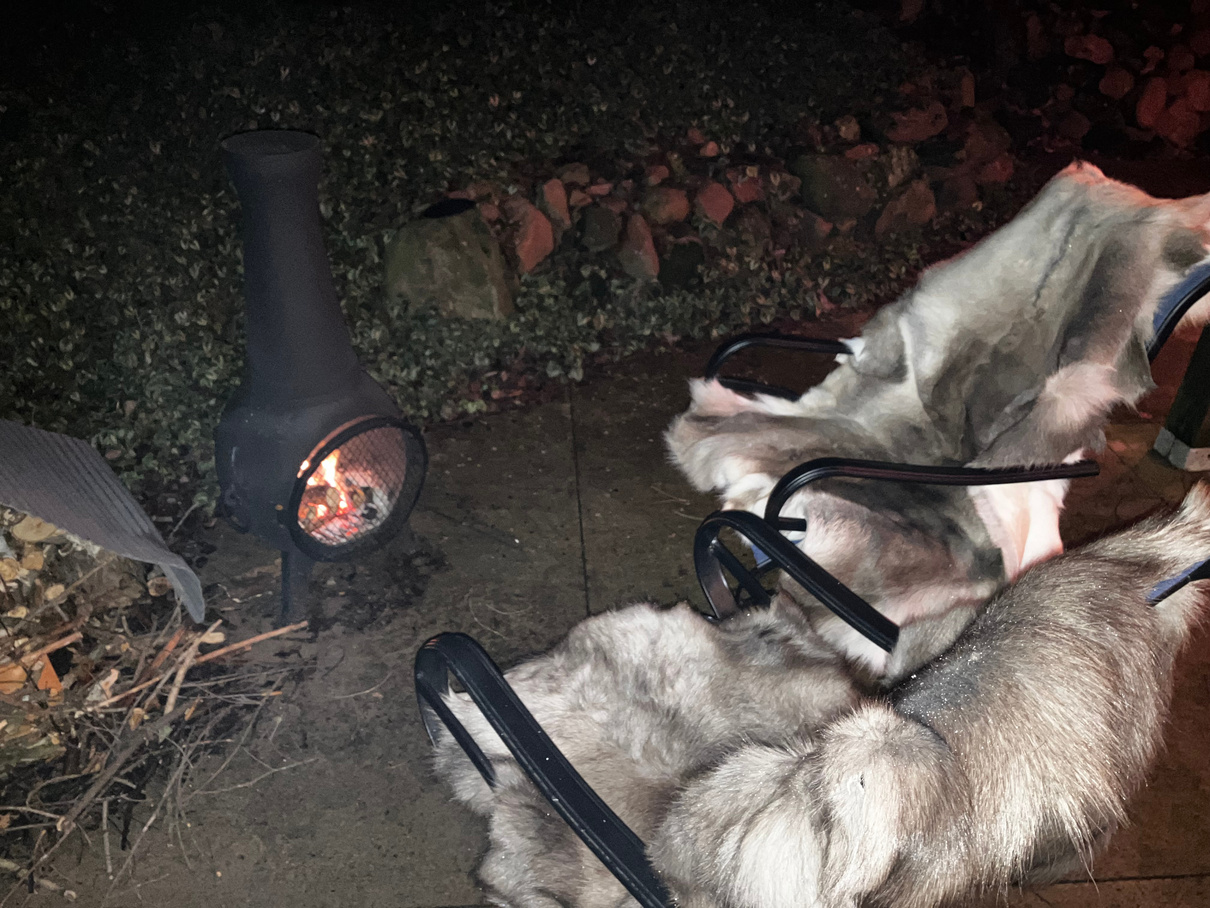

Reindeer hides to keep us warm on cold Wisconsin nights
Wasa crisp bread, Brunost
(brown cheese), and home-made skyr yogurt
best of

scandinavia

Adjø, Farvæl, Farvel
Farewell.
We hope you
enjoyed the tour.
Many thanks to our guides, driver, and
fellow travelers
for the
wonderful memories.
Begin planning your own trip here.
